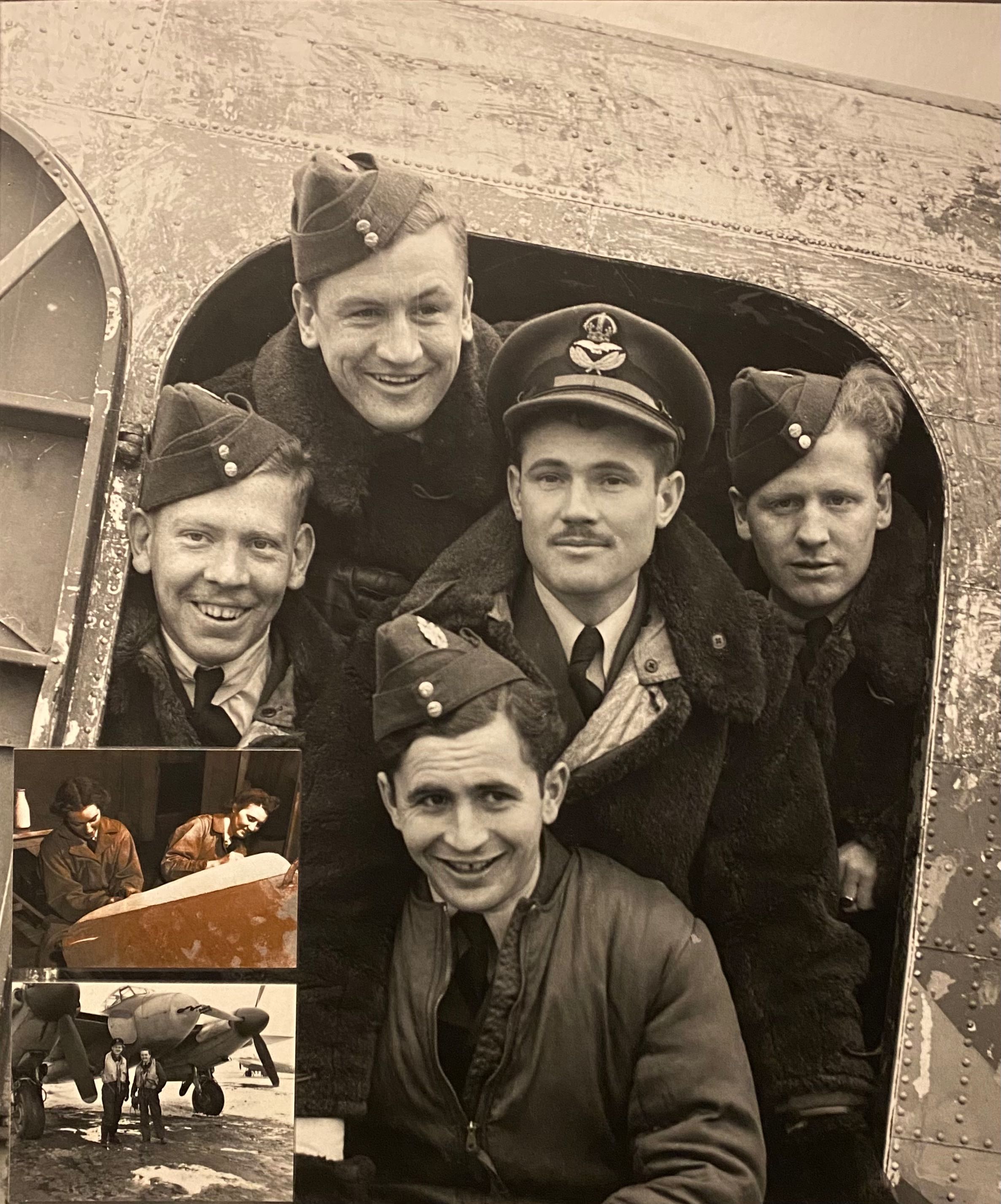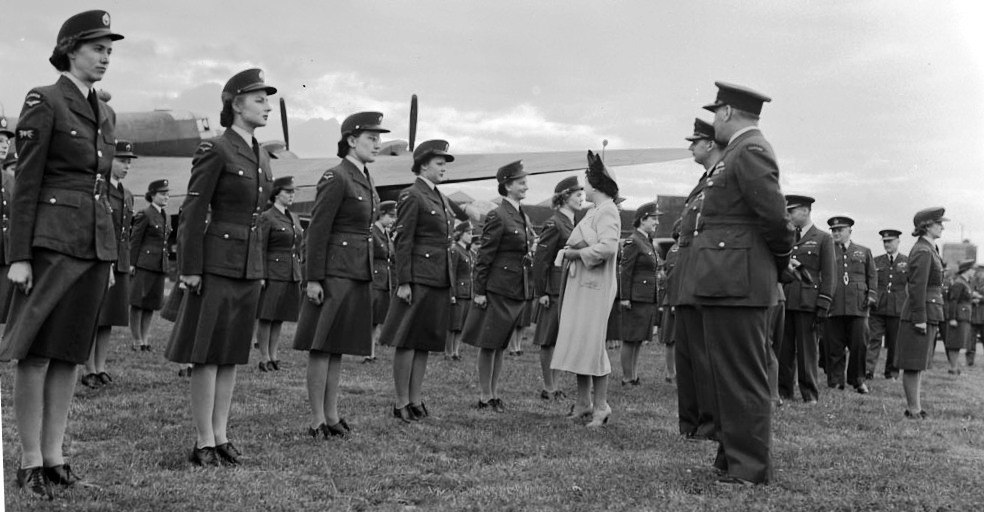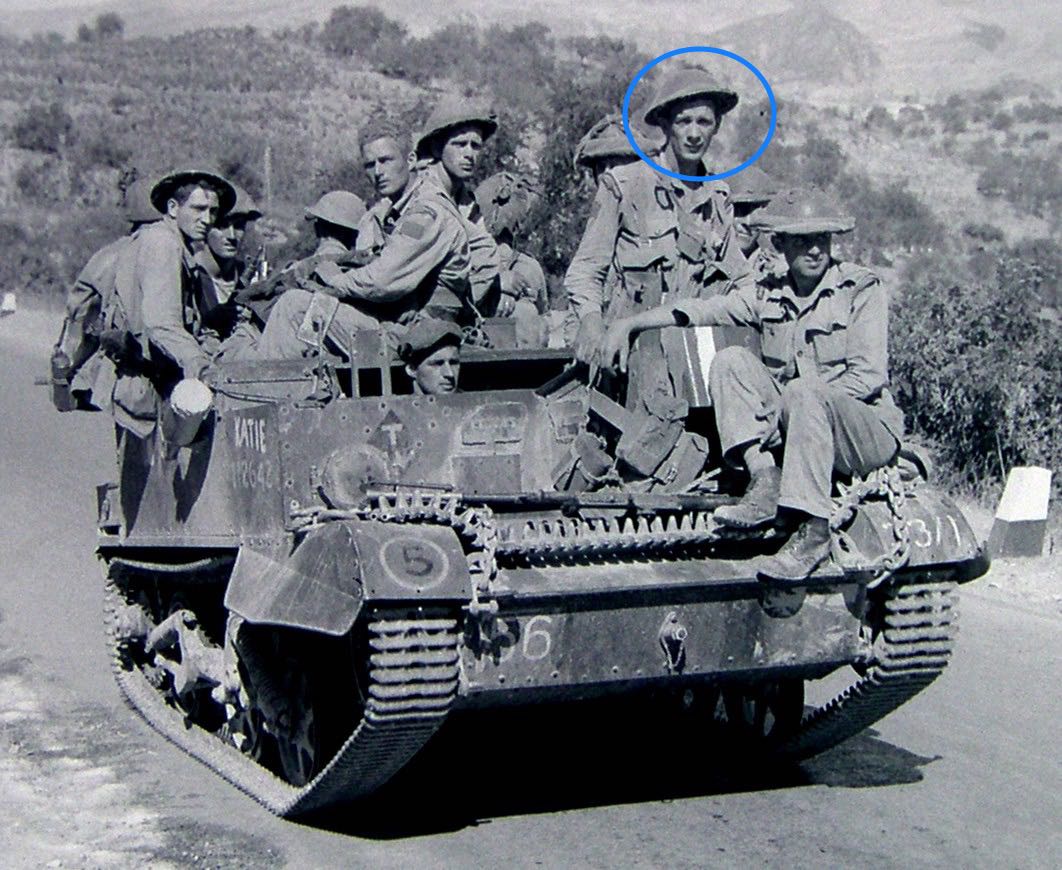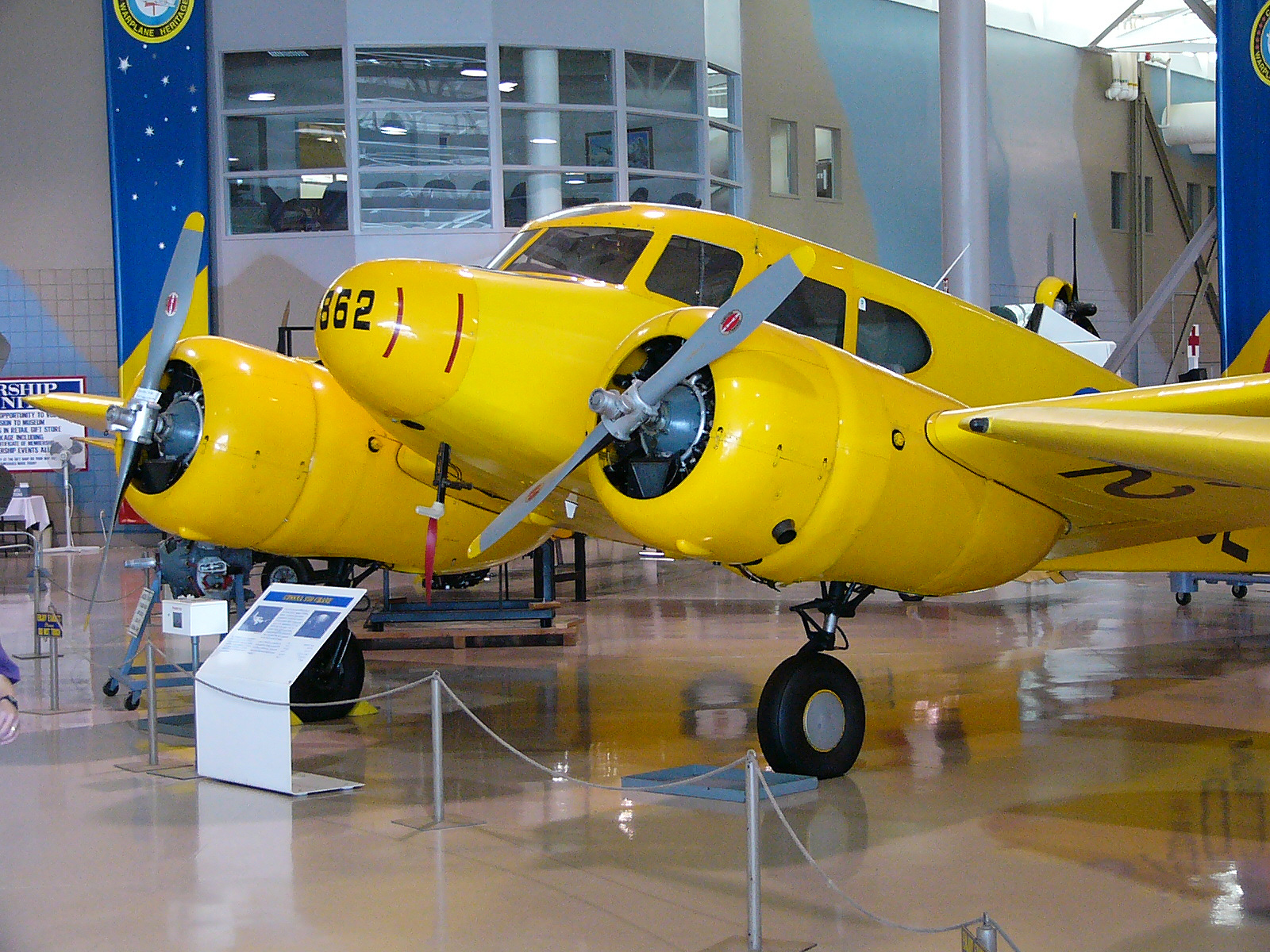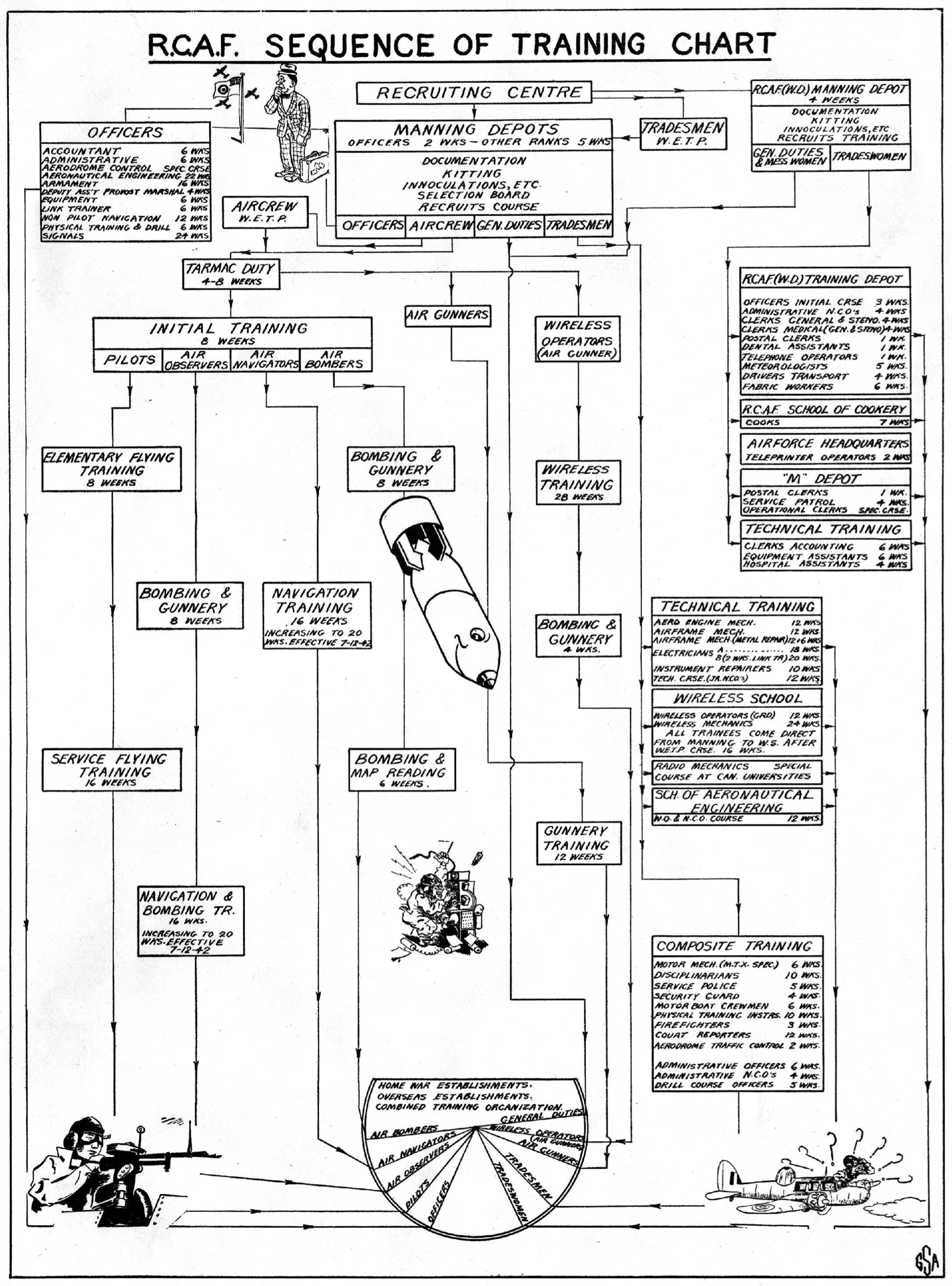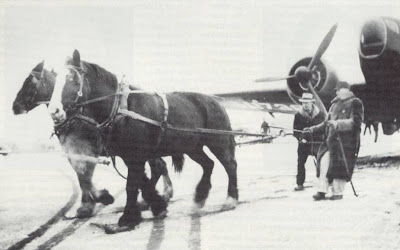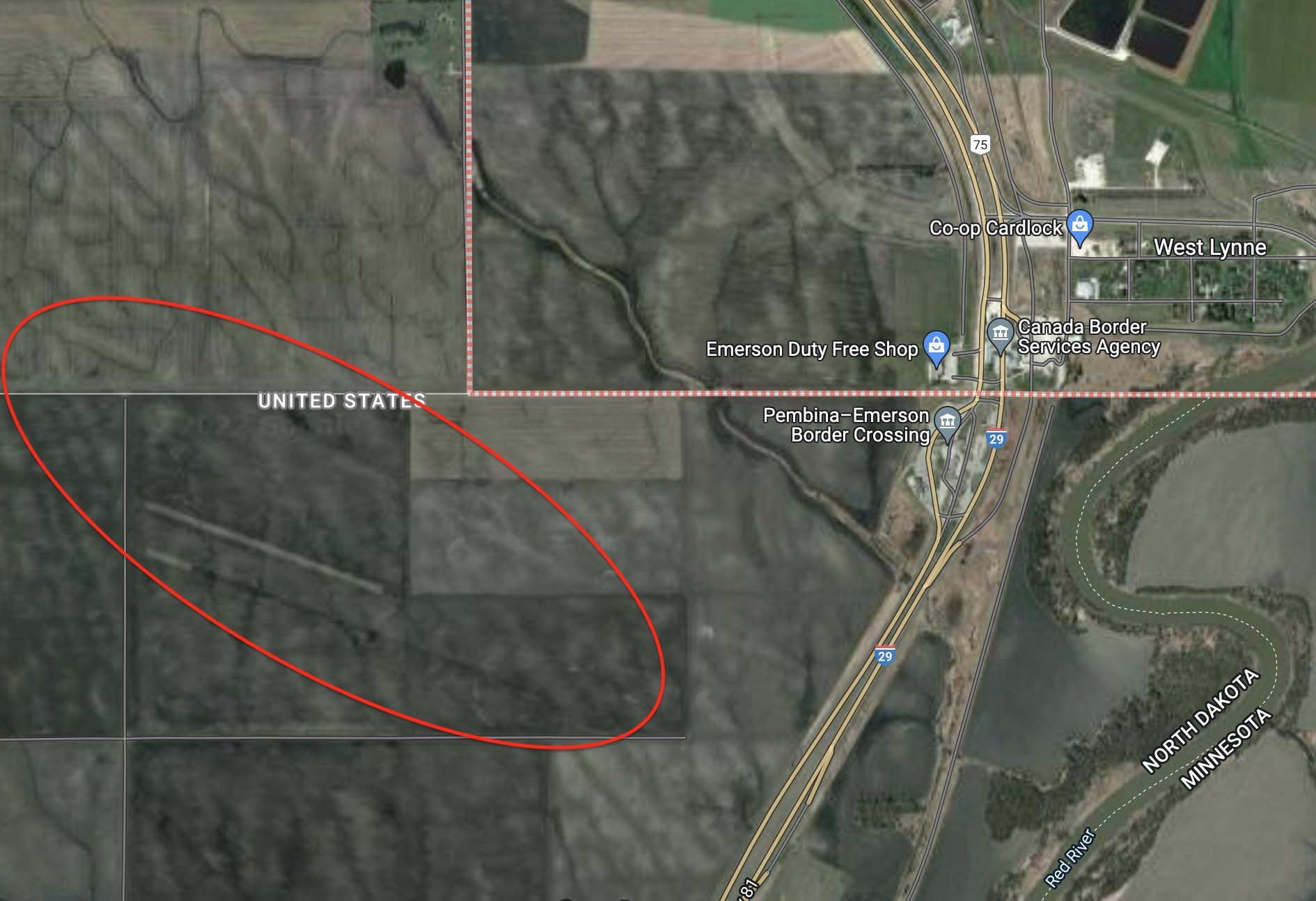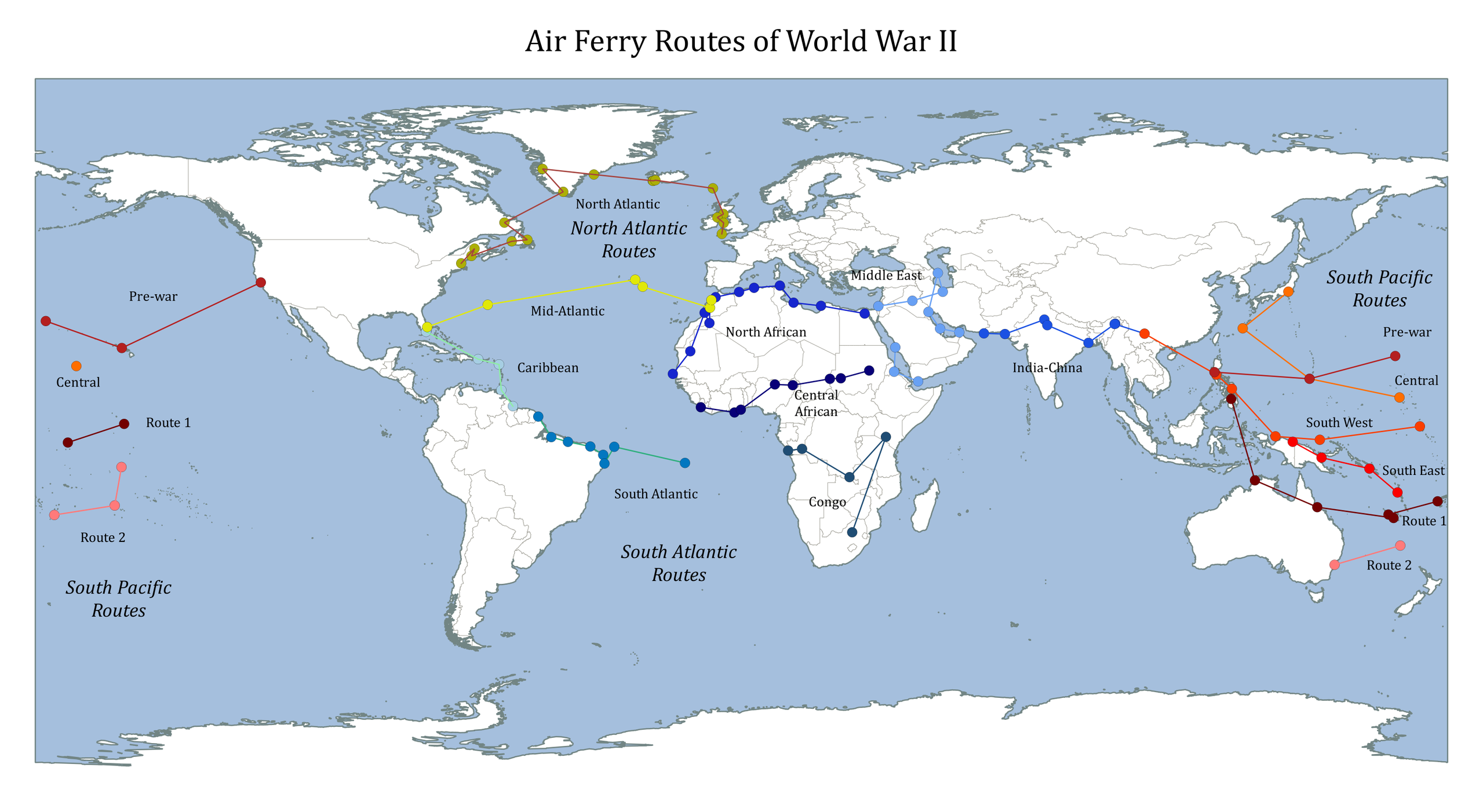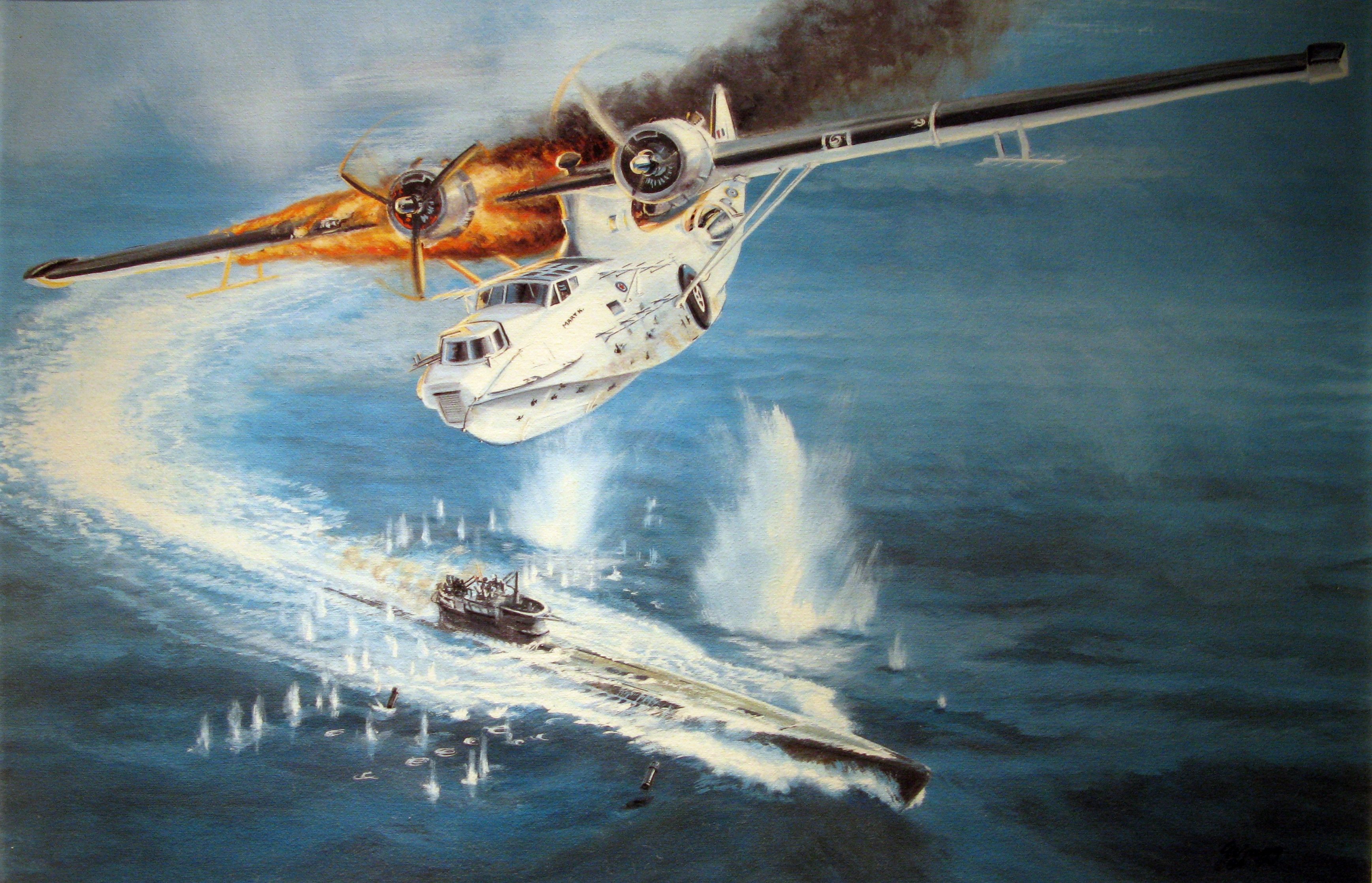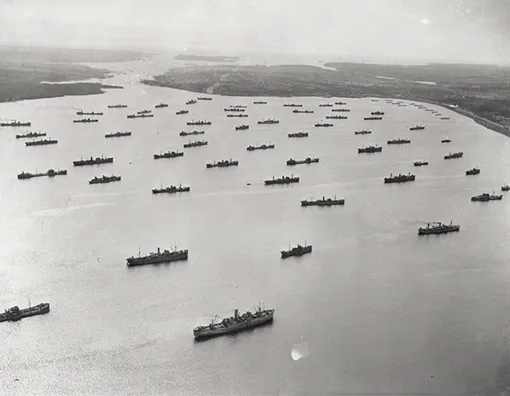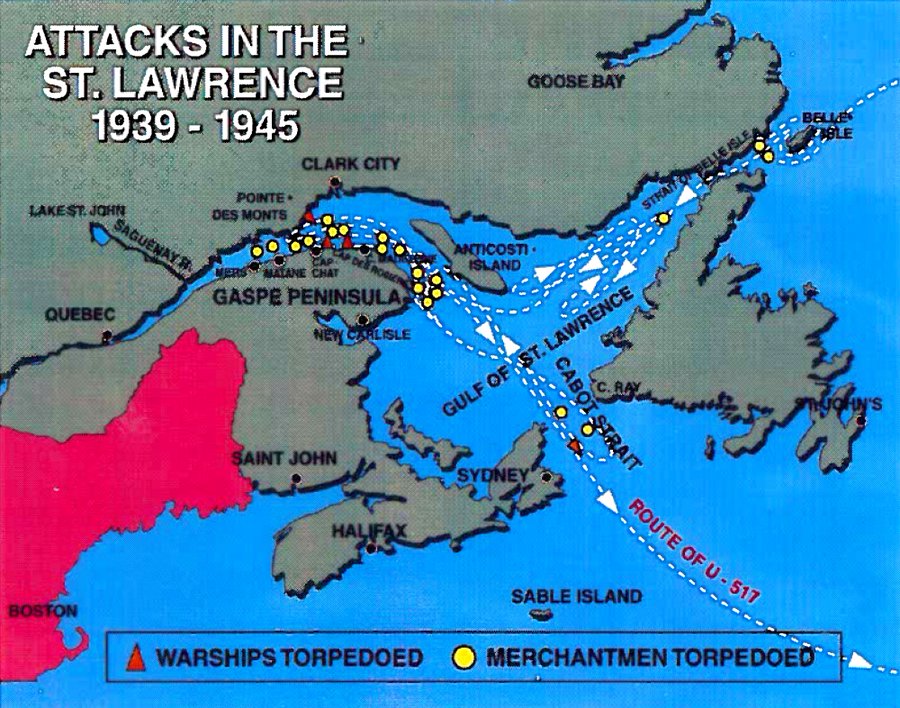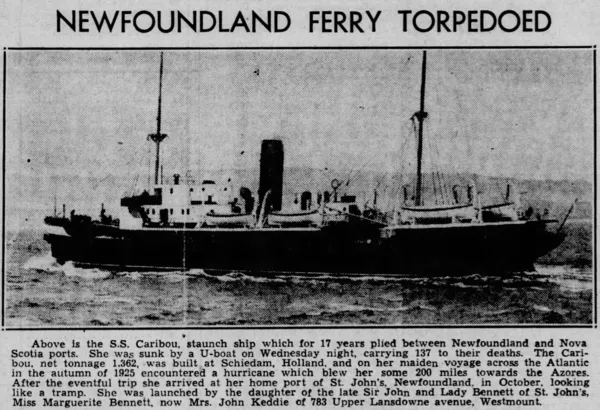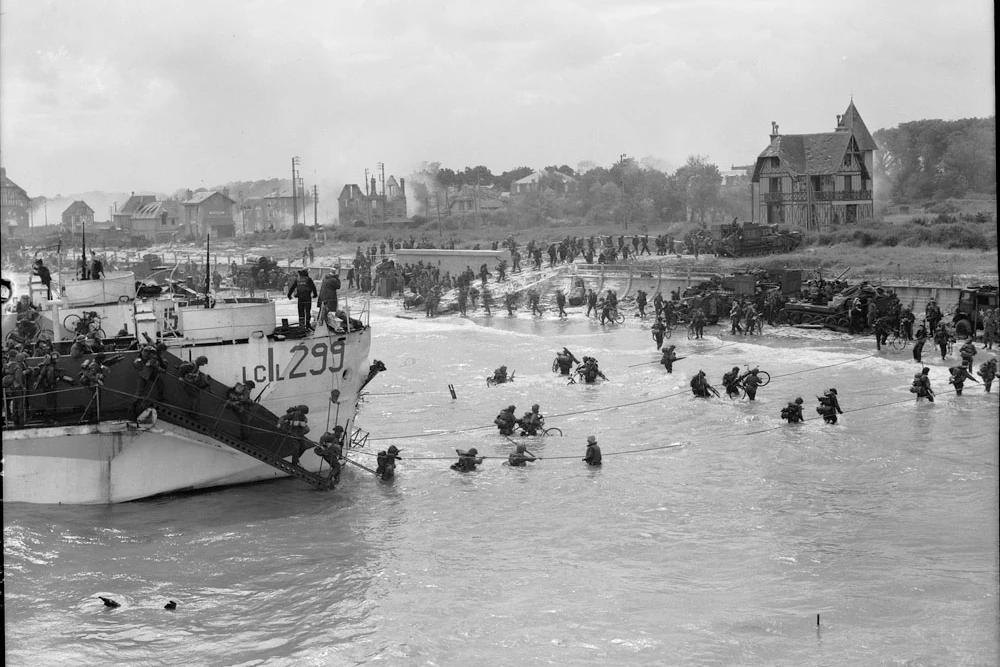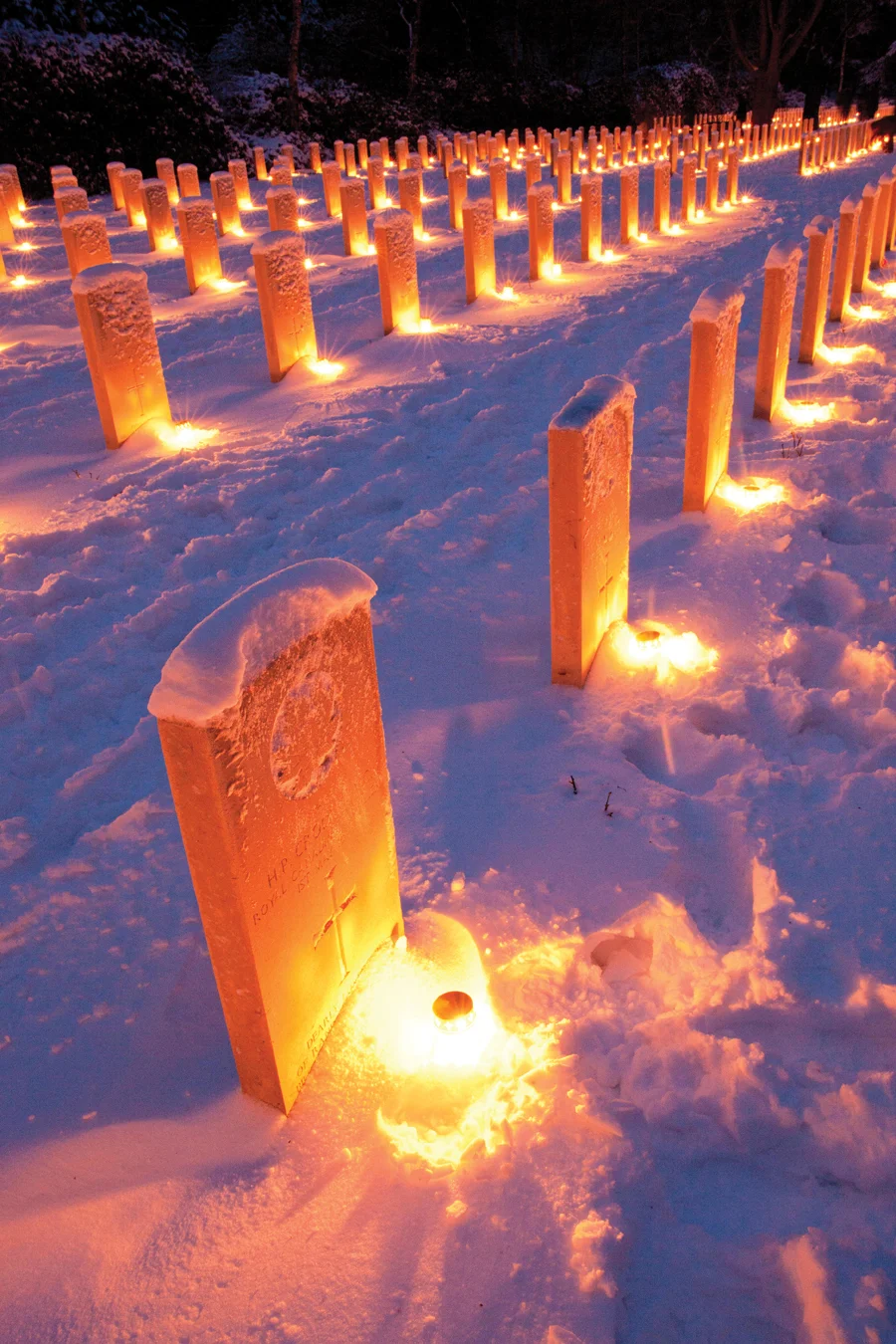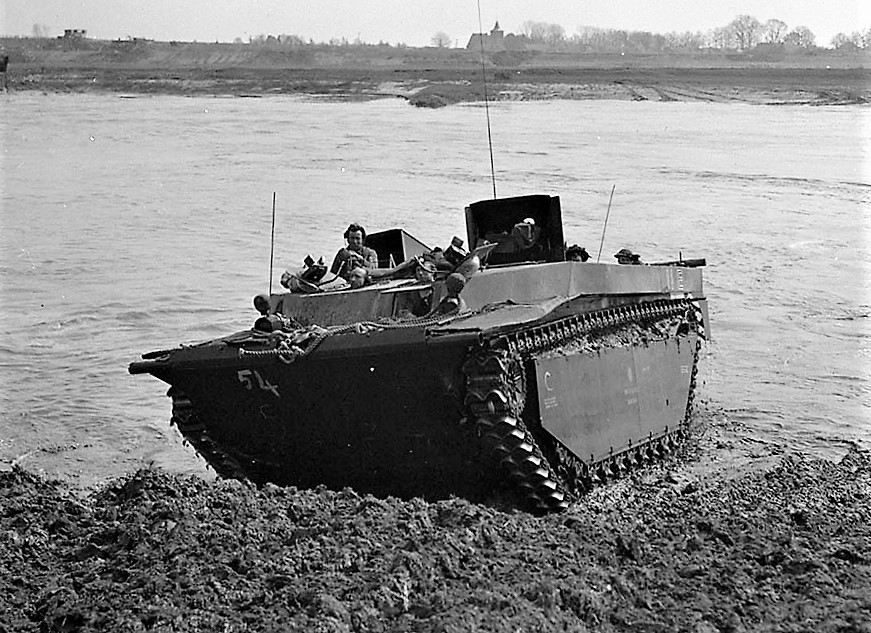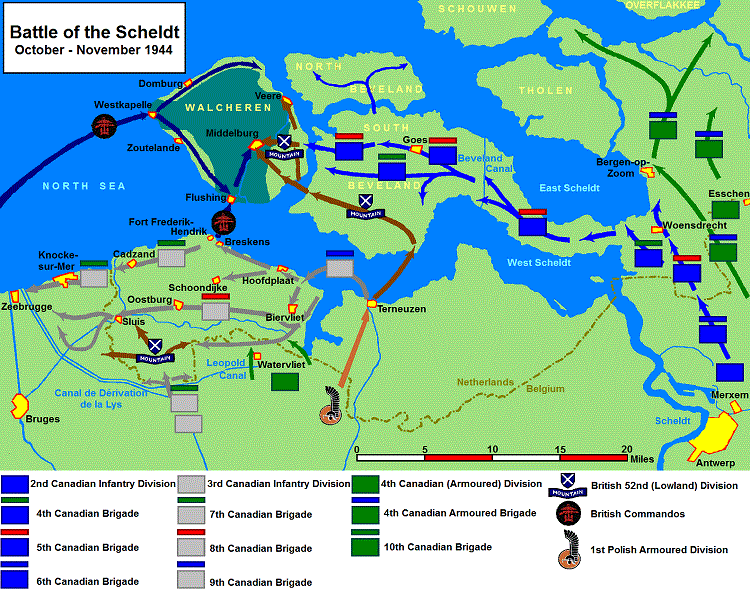During WW II Canada built training facilities all across Canada and graduated over 130,000 air crew and over 80,000 ground crew. Young highly skilled men were sent to employ the highest technology available against the enemy.
1 SFTS (RCAF)
Killed in Flying Accident
1940-04-29 Ottawa, Ontario (parents)
1 ANS (RCAF)
Killed in Flying Accident
1940-05-17 Windsor, Ontario
1 ANS (RCAF)
Killed in Flying Accident
1940-05-17 Saskatoon, Saskatchewan
1 ANS (RCAF)
Killed in Flying Accident
1940-05-17 Toronto, Ontario
5 EFTS (RCAF)
Killed in Flying Accident
1940-08-19 Hardisty, Alberta (parents)
1 SFTS (RCAF)
Killed in Flying Accident
1940-09-02 Toronto, Ontario
2 SFTS (RCAF)
Killed in Flying Accident
1940-09-27
2 SFTS (RCAF)
Killed in Flying Accident
1940-09-27 St John, New Brunswick
1 SFTS (RCAF)
Killed in Flying Accident
1940-10-06 Milwaukee, Wisconsin, USA
1 SFTS (RCAF)
Killed in Flying Accident
1940-10-06 Edmonton, Alberta
1 SFTS (RCAF)
Killed in Flying Accident
1940-10-30 Winnipeg, Manitoba
11 EFTS (RCAF)
Killed in Vehicle Accident
1940-11-05
2 EFTS (RCAF)
Killed in Flying Accident
1940-11-07 Toledo, Ohio, USA (parents)
1 BGS (RCAF)
Died
1940-11-08 Cornwall, Ontario
5 EFTS (RCAF)
Killed in Flying Accident
1940-11-16 Edmonton, Alberta
5 EFTS (RCAF)
Killed in Flying Accident
1940-11-16 Calgary, Alberta
2 SFTS (RCAF)
Died
1940-11-16 Tavistock, Ontario
1 SFTS (RCAF)
Killed in Flying Accident
1940-11-19 Ottawa, Ontario
1 SFTS (RCAF)
Killed in Flying Accident
1940-11-19 St Catharines, Ontario
1 BGS (RCAF)
Killed in Flight Line Accident
1940-11-19 Westmount, Quebec
2 SFTS (RCAF)
Killed in Flying Accident
1940-11-22 St Catharines, Ontario
2 SFTS (RCAF)
Killed in Flying Accident
1940-11-22 London, Ontario
9 EFTS (RCAF)
Killed in Flying Accident
1940-11-23 Waterloo, Ontario
9 EFTS (RCAF)
Killed in Flying Accident
1940-11-23 Fonthill, Ontario
3 EFTS (RCAF)
Killed in Flying Accident
1940-11-25 South Orange, New Jersey, USA
3 EFTS (RCAF)
Killed in Flying Accident
1940-11-25 Montreal, Quebec
1 EFTS (RCAF)
Killed in Flying Accident
1940-12-05 Moy, County Tyrone, Northern Ireland
31 ANS (RAF)
Drowned
1940-12-07
31 ANS (RAF)
Drowned
1940-12-07
1 SFTS (RCAF)
Killed in Flying Accident
1940-12-07 Moose Jaw, Saskatchewan
4 BGS (RCAF)
Killed in Flying Accident
1940-12-08 Minaki, Ontario
4 BGS (RCAF)
Killed in Flying Accident
1940-12-08 Adrian, Michigan, USA
4 BGS (RCAF)
Killed in Flying Accident
1940-12-08 Oshawa, Ontario
1 SFTS (RCAF)
Killed in Flying Accident
1940-12-12 Cabri, Saskatchewan
1 SFTS (RCAF)
Killed in Flying Accident
1940-12-13
1 SFTS (RCAF)
Killed in Flying Accident
1940-12-13
1 SFTS (RCAF)
Killed in Flying Accident
1940-12-13 Edmonton, Alberta
1 SFTS (RCAF)
Killed in Flying Accident
1940-12-13 Guelph, Ontario
6 SFTS (RCAF)
Killed in Flying Accident
1940-12-14 Westmount, Quebec
1 EFTS (RCAF)
Killed in Flying Accident
1940-12-21 Horning's Mills, Ontario (parents)
1 EFTS (RCAF)
Killed in Flying Accident
1940-12-21 Canning, Kings County, Nova Scotia (parents)
3 SFTS (RCAF)
Died
1940-12-25 Viceroy, Saskatchewan
31 SFTS (RAF)
Killed in Flying Accident
1940-12-30 Waterloo, Ontario
31 SFTS (RAF)
Killed in Flying Accident
1940-12-30 Toronto, Ontario
1 ANS (RCAF)
Killed in Flying Accident
1941-01-06 Toronto, Ontario
1 ANS (RCAF)
Killed in Flying Accident
1941-01-06 Assiniboia, Saskatchewan
1 ANS (RCAF)
Killed in Flying Accident
1941-01-06 Winnipeg, Manitoba
1 ANS (RCAF)
Killed in Flying Accident
1941-01-06 Ottawa, Ontario
1 ANS (RCAF)
Killed in Flying Accident
1941-01-06 Niagara Falls, Ontario
2 SFTS (RCAF)
Killed in Flying Accident
1941-01-07 Bourget, Ontario
2 SFTS (RCAF)
Killed in Flying Accident
1941-01-07 Winnipeg, Manitoba
7 EFTS (RCAF)
Killed in Flying Accident
1941-01-15 Vancouver, British Columbia
7 EFTS (RCAF)
Killed in Flying Accident
1941-01-15 Brantford, Ontario
8 EFTS (RCAF)
Killed in Flying Accident
1941-01-16 Portland, Oregon, USA
32 SFTS (RAF)
Killed in Flying Accident
1941-01-23
32 SFTS (RAF)
Killed in Flying Accident
1941-01-23
6 SFTS (RCAF)
Killed in Flying Accident
1941-01-23 Toronto, Ontario
6 SFTS (RCAF)
Killed in Flying Accident
1941-01-23 Thorndale, Ontario
3 SFTS (RCAF)
Killed in Flying Accident
1941-01-25 Montreal, Quebec
4 SFTS (RCAF)
Killed in Flying Accident
1941-01-30 Port Arthur, Ontario
2 SFTS (RCAF)
Died
1941-01-31 Winnipeg, Manitoba
1 SFTS (RCAF)
Killed in Flying Accident
1941-02-04
1 SFTS (RCAF)
Killed in Flying Accident
1941-02-04
1 SFTS (RCAF)
Killed in Flying Accident
1941-02-11 North Bend, British Columbia
2 EFTS (RCAF)
Killed in Flying Accident
1941-02-14 Winnipeg, Manitoba
2 EFTS (RCAF)
Killed in Flying Accident
1941-02-14 London, Ontario
3 SFTS (RCAF)
Killed in Flying Accident
1941-02-17 Wichita, Kansas USA (parents)
3 SFTS (RCAF)
Killed in Flying Accident
1941-02-17 Wood Mountain, Saskatchewan
2 SFTS (RCAF)
Killed in Flying Accident
1941-02-21 Owen Sound, Ontario
1 SFTS (RCAF)
Killed in Flying Accident
1941-02-23 Mount Pleasant, Michigan, USA
1 SFTS (RCAF)
Killed in Flying Accident
1941-02-23 Oshawa, Ontario
1 ANS (RCAF)
Killed in Flying Accident
1941-02-25 Rodney, Ontario
1 ANS (RCAF)
Killed in Flying Accident
1941-02-25 Lucknow, Ontario
1 ANS (RCAF)
Killed in Flying Accident
1941-02-25 London, Ontario
1 ANS (RCAF)
Killed in Flying Accident
1941-02-25 Carman, Manitoba
31 SFTS (RAF)
Died
1941-03-01
1 SFTS (RCAF)
Killed in Flying Accident
1941-03-02 St John's, Newfoundland
8 SFTS (RCAF)
Killed in Flying Accident
1941-03-12 City View, Ontario
4 SFTS (RCAF)
Killed in Flying Accident
1941-03-12 Belize, British Honduras
8 SFTS (RCAF)
Killed in Flying Accident
1941-03-12 Vancouver, British Columbia
4 SFTS (RCAF)
Killed in Flying Accident
1941-03-12 Toronto, Ontario
31 ANS (RAF)
Killed in Flying Accident
1941-03-13
31 ANS (RAF)
Killed in Flying Accident
1941-03-13
31 ANS (RAF)
Killed in Flying Accident
1941-03-13
31 ANS (RAF)
Killed in Flying Accident
1941-03-13
31 ANS (RAF)
Killed in Flying Accident
1941-03-13 Sherwood, Nottingham, England (parents)
31 ANS (RAF)
Killed in Flying Accident
1941-03-13
31 ANS (RAF)
Killed in Flying Accident
1941-03-13
9 SFTS (RCAF)
Killed in Flying Accident
1941-03-20 Chilliwack, British Columbia
6 SFTS (RCAF)
Killed in Flying Accident
1941-03-21 Thorold, Ontario
5 SFTS (RCAF)
Killed in Flying Accident
1941-03-23 Cornwall, Ontario
6 SFTS (RCAF)
Killed in Flying Accident
1941-03-27 Calgary, Alberta
6 SFTS (RCAF)
Killed in Flying Accident
1941-03-27 Montreal, Quebec
33 SFTS (RAF)
Killed in Flying Accident
1941-04-02
7 SFTS (RCAF)
Killed in Flying Accident
1941-04-02 Winnipeg, Manitoba
7 SFTS (RCAF)
Killed in Flying Accident
1941-04-02 Crystal City, Manitoba (parents)
3 SFTS (RCAF)
Died
1941-04-04 Calgary, Alberta
1 SFTS (RCAF)
Killed in Flying Accident
1941-04-08
4 SFTS (RCAF)
Killed in Flying Accident
1941-04-08
31 BGS (RAF)
Killed in Flying Accident
1941-04-08 Seine, France
31 BGS (RAF)
Killed in Flying Accident
1941-04-08 Los Angeles, California, USA
33 SFTS (RAF)
Killed in Flying Accident
1941-04-12
31 SFTS (RAF)
Killed in Flying Accident
1941-04-13
33 SFTS (RAF)
Killed in Flying Accident
1941-04-19
33 SFTS (RAF)
Killed in Flying Accident
1941-04-19
31 ANS (RAF)
Killed in Flying Accident
1941-04-24
31 ANS (RAF)
Killed in Flying Accident
1941-04-24
2 SFTS (RCAF)
Killed in Flying Accident
1941-04-25 Toronto, Ontario
2 SFTS (RCAF)
Killed in Flying Accident
1941-04-25 Ottawa, Ontario
32 SFTS (RAF)
Killed in Flying Accident
1941-04-26
9 SFTS (RCAF)
Killed in Flying Accident
1941-04-26 Vancouver, British Columbia
9 SFTS (RCAF)
Killed in Flying Accident
1941-04-26 Kingston, Ontario
33 SFTS (RAF)
Killed in Flying Accident
1941-04-27
34 SFTS (RAF)
Killed in Flying Accident
1941-04-28
34 SFTS (RAF)
Killed in Flying Accident
1941-04-28
2 SFTS (RCAF)
Killed in Flying Accident
1941-04-29 London, Ontario
1 SFTS (RCAF)
Killed in Flying Accident
1941-04-30
11 SFTS (RCAF)
Killed in Flying Accident
1941-05-02 Saskatoon, Saskatchewan
11 SFTS (RCAF)
Killed in Flying Accident
1941-05-02 Regina, Saskatchewan
13 EFTS (RCAF)
Killed in Flying Accident
1941-05-02 Crowell, Texas, USA
11 SFTS (RCAF)
Killed in Flying Accident
1941-05-04 Hamilton, Ontario
32 SFTS (RAF)
Killed in Flying Accident
1941-05-05
32 SFTS (RAF)
Killed in Flying Accident
1941-05-05
2 SFTS (RCAF)
Killed in Flying Accident
1941-05-05 Toronto, Ontario
2 SFTS (RCAF)
Killed in Flying Accident
1941-05-05 Ottawa, Ontario
2 SFTS (RCAF)
Killed in Flying Accident
1941-05-06
2 SFTS (RCAF)
Killed in Flying Accident
1941-05-06 Toronto, Ontario
18 EFTS (RCAF)
Killed in Flying Accident
1941-05-09 Berkley, California, USA
5 EFTS (RCAF)
Killed in Flying Accident
1941-05-13 Edmonton, Alberta
7 SFTS (RCAF)
Killed
1941-05-13 Vancouver, British Columbia
34 SFTS (RAF)
Killed in Flying Accident
1941-05-16
32 SFTS (RAF)
Killed in Flying Accident
1941-05-20 Oslo, Oslo kommune, Oslo fylke, Norway
31 ANS (RCAF)
Killed in Flying Accident
1941-05-21 Jansen, Saskatchewan
14 EFTS (RCAF)
Killed in Flying Accident
1941-05-21 Prince Albert, Saskatchewan
34 SFTS (RAF)
Killed in Flying Accident
1941-05-23
34 SFTS (RAF)
Killed in Flying Accident
1941-05-23
5 EFTS (RCAF)
Killed in Flying Accident
1941-05-24 Edmonton, Alberta
5 EFTS (RCAF)
Killed in Flying Accident
1941-05-24 Vancouver, British Columbia
10 SFTS (RCAF)
Killed in Flying Accident
1941-05-24 Toronto, Ontario
4 SFTS (RCAF)
Killed in Flying Accident
1941-05-25
6 SFTS (RCAF)
Killed in Flying Accident
1941-05-26 Montreal, Quebec
13 EFTS (RCAF)
Killed in Flying Accident
1941-05-30 Montreal, Quebec
1 SFTS (RCAF)
Killed in Flying Accident
1941-05-30
1 SFTS (RCAF)
Killed in Flying Accident
1941-05-30 Palisades Park, New Jersey, USA
9 BGS (RAF)
Killed in Flying Accident
1941-05-31 Arnprior, Ontario (parents)
9 SFTS (RCAF)
Killed in Flying Accident
1941-06-01 Montreal, Quebec
9 SFTS (RCAF)
Killed in Flying Accident
1941-06-01 Montreal, Quebec
11 SFTS (RCAF)
Killed in Flying Accident
1941-06-06 Winnipeg, Manitoba
11 SFTS (RCAF)
Killed in Flying Accident
1941-06-06 Regina, Saskatchewan
10 SFTS (RCAF)
Killed in Flying Accident
1941-06-06 Saskatoon, Saskatchewan
3 BGS (RCAF)
Died
1941-06-07 Winnipeg, Manitoba (parents)
31 SFTS (RAF)
Killed in Flying Accident
1941-06-09 Paisley, Scotland UK
15 EFTS (RCAF)
Killed in Flying Accident
1941-06-10 Winnipeg, Manitoba
16 EFTS (RCAF)
Killed in Flying Accident
1941-06-10 Edmonton, Alberta (parents)
31 BGS (RAF)
Died
1941-06-12 Hamilton, Ontario
11 SFTS (RCAF)
Killed in Flying Accident
1941-06-13
3 SFTS (RCAF)
Killed in Flying Accident
1941-06-13 Belleville, Ontario
11 SFTS (RCAF)
Killed in Flying Accident
1941-06-16 Inverness, Nova Scotia
31 SFTS (RAF)
Drowned
1941-06-17
31 ANS (RAF)
Killed in Flying Accident
1941-06-20
31 ANS (RAF)
Killed in Flying Accident
1941-06-20
31 ANS (RAF)
Killed in Flying Accident
1941-06-20
1 EFTS (RCAF)
Killed in Flying Accident
1941-06-20 Brockville, Ontario
6 EFTS (RCAF)
Killed in Flying Accident
1941-06-20 Danville, Quebec
31 ANS (RAF)
Killed in Flying Accident
1941-06-20 Cobourg, Ontario
6 SFTS (RCAF)
Killed in Flying Accident
1941-06-21 Vancouver, British Columbia
3 BGS (RCAF)
Killed in Flying Accident
1941-06-27 Toronto, Ontario
3 BGS (RCAF)
Killed in Flying Accident
1941-06-27 Toronto, Ontario
10 SFTS (RCAF)
Killed in Flying Accident
1941-06-28 Toronto, Ontario
33 SFTS (RAF)
Killed in Flying Accident
1941-06-29 Duffield, Alberta
33 SFTS (RAF)
Killed in Flying Accident
1941-06-29 Kinuso, Alberta
3 ITS (RCAF)
Drowned
1941-06-30 Montreal, Quebec
4 SFTS (RCAF)
Killed in Flying Accident
1941-07-01 Rapid City, South Dakota, USA
4 SFTS (RCAF)
Killed in Flying Accident
1941-07-01 Montreal, Quebec
32 SFTS (RAF)
Killed in Flying Accident
1941-07-02 Revelstoke, British Columbia
34 SFTS (RAF)
Killed in Flying Accident
1941-07-03
34 SFTS (RAF)
Killed in Flying Accident
1941-07-03
14 EFTS (RCAF)
Killed in Flying Accident
1941-07-03 Beansville, Ontario
1 BGS (RCAF)
Killed in Flying Accident
1941-07-06
1 BGS (RCAF)
Killed in Flying Accident
1941-07-06
2 SFTS (RCAF)
Drowned
1941-07-08 Richmound, Saskatchewan
5 EFTS (RCAF)
Killed in Flying Accident
1941-07-09 Camrose, Alberta
5 EFTS (RCAF)
Killed in Flying Accident
1941-07-09 Los Angeles, California, USA
6 SFTS (RCAF)
Killed in Flying Accident
1941-07-11 Bethel, Maine, USA (parents)
32 SFTS (RAF)
Drowned
1941-07-12
31 SFTS (RAF)
Killed in Flying Accident
1941-07-14
14 EFTS (RCAF)
Killed in Flying Accident
1941-07-14 St Louis, Missouri, USA
34 SFTS (RAF)
Killed in Flying Accident
1941-07-16
34 SFTS (RAF)
Killed in Flying Accident
1941-07-16
4 SFTS (RCAF)
Killed in Flying Accident
1941-07-16
34 SFTS (RAF)
Killed in Flying Accident
1941-07-16 Bedford, Nova Scotia
3 BGS (RCAF)
unknown
1941-07-17 Winnipeg, Manitoba
5 EFTS (RCAF)
Killed in Flying Accident
1941-07-18 Paris, Ontario
9 SFTS (RCAF)
Killed in Flying Accident
1941-07-20 Taber, Alberta
9 SFTS (RCAF)
Killed in Flying Accident
1941-07-22 Vernon River, Prince Edward Island
11 SFTS (RCAF)
Killed in Flying Accident
1941-07-27 Flin Flon, Manitoba
6 EFTS (RCAF)
Drowned
1941-07-27 Walsenburg, Colorado, USA
16 EFTS (RCAF)
Killed in Flying Accident
1941-07-28 Lake Megantic, Quebec
9 SFTS (RCAF)
Killed in Flying Accident
1941-08-06 Roseland, Ontario (parents)
9 SFTS (RCAF)
Killed in Flying Accident
1941-08-06 Campbellton, New Brunswick
8 SFTS (RCAF)
Killed in Flying Accident
1941-08-07 Toronto, Ontario
8 SFTS (RCAF)
Killed in Flying Accident
1941-08-07 Toronto, Ontario
7 SFTS (RCAF)
Died
1941-08-08 Lyndhurst, Ontario
32 EFTS (RAF)
Died
1941-08-11
3 SFTS (RCAF)
Killed in Flying Accident
1941-08-14 Madison, Saskatchewan
3 SFTS (RCAF)
Killed in Flying Accident
1941-08-14 Victoria, British Columbia
2 SFTS (RCAF)
Killed in Flying Accident
1941-08-15
2 ITS (RCAF)
Died
1941-08-15 Winnipeg, Manitoba
33 SFTS (RAF)
Killed in Flying Accident
1941-08-16
4 ITS (RCAF)
Died
1941-08-17 Edmonton, Alberta
1 ANS (RCAF)
Killed
1941-08-18 Vancouver, British Columbia
9 AOS (RAF)
Killed in Flying Accident
1941-08-21 Vancouver, British Columbia
4 SFTS (RCAF)
Killed in Flying Accident
1941-08-22 Saskatoon, Saskatchewan
12 SFTS (RCAF)
Died
1941-08-23
2 ANS (RCAF)
Killed in Flying Accident
1941-08-25 Calgary, Alberta
2 ANS (RCAF)
Killed in Flying Accident
1941-08-25
2 ANS (RCAF)
Killed in Flying Accident
1941-08-25
2 ANS (RCAF)
Killed in Flying Accident
1941-08-25 Huronville, Saskatchewan
5 SFTS (RCAF)
Killed
1941-08-26 Toronto, Ontario
32 SFTS (RAF)
Killed in Flying Accident
1941-08-27
5 SFTS (RCAF)
Killed in Flying Accident
1941-08-27 Pembroke, Ontario
5 SFTS (RAF)
Killed in Flying Accident
1941-08-27 Des Moines, Iowa, USA
32 SFTS (RAF)
Killed in Flying Accident
1941-08-28
32 SFTS (RAF)
Killed in Flying Accident
1941-08-28
4 SFTS (RCAF)
Killed in Flying Accident
1941-08-30 Salado, Texas, USA
4 SFTS (RCAF)
Killed in Flying Accident
1941-08-30 Windsor, Ontario
19 EFTS (RCAF)
Died
1941-08-31 Portland, Oregon, USA
4 AOS (RCAF)
Killed in Flying Accident
1941-09-02
31 EFTS (RAF)
Killed in Flying Accident
1941-09-02 Regina, Saskatchewan
31 EFTS (RAF)
Killed in Flying Accident
1941-09-04 Mundare, Alberta
9 SFTS (RCAF)
Killed in Flying Accident
1941-09-11 New Richmond, Quebec (parents)
12 SFTS (RCAF)
Killed in Flying Accident
1941-09-13 Kerrville, Texas, USA
12 SFTS (RCAF)
Killed in Flying Accident
1941-09-13 Topeka, Kansas, USA
2 MD (RCAF)
Died
1941-09-15 Chesley, Ontario
34 SFTS (RAF)
Killed in Flying Accident
1941-09-16
9 SFTS (RCAF)
Killed in Flying Accident
1941-09-16 Wilkie, Saskatchewan
12 EFTS (RCAF)
Killed in Flying Accident
1941-09-16 Toronto, Ontario
1 BGS (RCAF)
Killed in Vehicle Accident
1941-09-17 Gadsby, Alberta
9 EFTS (RCAF)
Killed in Flying Accident
1941-09-19 East Point, Georgia, USA
31 SFTS (RAF)
Killed in Flying Accident
1941-09-21
7 SFTS (RCAF)
Killed in Flying Accident
1941-09-21 Port Moody, British Columbia
11 EFTS (RCAF)
Killed in Flying Accident
1941-09-21 Berwyn, Illinois, USA
35 SFTS (RAF)
Killed in Flying Accident
1941-09-30
7 SFTS (RCAF)
unknown
1941-10-01 Saskatoon, Saskatchewan
7 SFTS (RCAF)
Died
1941-10-01 Tofield, Alberta
5 SFTS (RCAF)
Died
1941-10-03 Toronto, Ontario
3 MD (RCAF)
Died
1941-10-08 New Liskeard, Ontario, Canada
14 SFTS (RCAF)
Killed in Flying Accident
1941-10-09 Chatham, Virginia, USA
14 SFTS (RCAF)
Killed in Flying Accident
1941-10-09 Cincinnati, Ohio USA
2 SFTS (RCAF)
Collateral
1941-10-15 Belleville, Ontario
2 TC (RAF)
Killed in Flying Accident
1941-10-16
35 SFTS (RAF)
Killed in Flying Accident
1941-10-17
35 SFTS (RAF)
Killed in Flying Accident
1941-10-17
1 SFTS (RCAF)
Killed in Flying Accident
1941-10-18
1 SFTS (RCAF)
Killed in Flying Accident
1941-10-19 London, Ontario
1 SFTS (RCAF)
Killed in Flying Accident
1941-10-19 Toronto, Ontario
11 EFTS (RCAF)
Killed in Flying Accident
1941-10-20 Long Island, New York, USA
11 EFTS (RCAF)
Killed in Flying Accident
1941-10-20 Akron, Ohio, USA
3 SFTS (RCAF)
Killed
1941-10-23 Toronto, Ontario
14 EFTS (RCAF)
Killed in Flying Accident
1941-10-25 Oakland, California, USA
14 EFTS (RCAF)
Killed in Flying Accident
1941-10-25 Basswood, Manitoba (parents)
31 SFTS (RAF)
Accident
1941-10-28
5 MD (RCAF)
Died
1941-10-28 Richmond, Ontario
14 EFTS (RCAF)
Killed in Flying Accident
1941-10-30 Belmont, Manitoba
1 BGS (RCAF)
Killed in Vehicle Accident
1941-10-30 Little River, Digby County, Nova Scotia
3 EFTS (RCAF)
Killed in Flying Accident
1941-10-30 St Thomas, Ontario (parents)
3 EFTS (RCAF)
Killed in Flying Accident
1941-10-30 St Thomas, Ontario (parents)
11 SFTS (RCAF)
Killed in Flying Accident
1941-10-31 Corbyville, Ontario
5 EFTS (RCAF)
Killed in Flying Accident
1941-11-04 Norwich, Ontario
16 SFTS (RCAF)
Died
1941-11-07 Kingston, Ontario
7 BGS (RCAF)
Killed
1941-11-09 Toronto, Ontario
33 ANS (RAF)
Killed in Flying Accident
1941-11-13
33 ANS (RAF)
Killed in Flying Accident
1941-11-13
33 ANS (RAF)
Killed in Flying Accident
1941-11-13 St. Agnes, Cornwall, England (parents)
3 SFTS (RCAF)
Died
1941-11-13 Sedley, Saskatchewan
2 SFTS (RCAF)
Killed in Flying Accident
1941-11-16 Lebanon, New Hampshire, USA
2 SFTS (RCAF)
Killed in Flying Accident
1941-11-16 Montreal, Quebec
2 SFTS (RCAF)
Killed in Flying Accident
1941-11-17
2 SFTS (RCAF)
Killed in Flying Accident
1941-11-17 Fergus, Ontario
3 SFTS (RCAF)
Died
1941-11-17 Beulah, Manitoba
9 EFTS (RCAF)
Killed in Flying Accident
1941-11-17 Timmins, Ontario
9 SFTS (RCAF)
Killed in Flying Accident
1941-11-18 Montreal, Quebec
13 SFTS (RCAF)
Killed in Flying Accident
1941-11-19 Toronto, Ontario
31 GRS (RAF)
Killed in Flying Accident
1941-11-20
31 SFTS (RAF)
Killed in Flying Accident
1941-11-20
31 GRS (RAF)
Killed in Flying Accident
1941-11-20
31 GRS (RAF)
Killed in Flying Accident
1941-11-20
31 GRS (RAF)
Killed in Flying Accident
1941-11-20 Leamington Spa, Warwickshire, England
16 SFTS (RCAF)
Died
1941-11-20 Nanton, Alberta
4 SFTS (RCAF)
Died
1941-11-28 Dushore, Pennsylvania, USA
2 MD (RCAF)
Died
1941-11-28 Winnipeg, Manitoba
3 ITS (RCAF)
unknown
1941-11-29 Evanston, Illinois, USA
5 BGS (RCAF)
Killed in Flying Accident
1941-12-01
5 BGS (RCAF)
Killed in Flying Accident
1941-12-01
19 EFTS (RCAF)
Killed in Flying Accident
1941-12-01 Rouleau, Saskatchewan
5 BGS (RCAF)
Killed in Flying Accident
1941-12-01 Montreal, Quebec (parents)
16 SFTS (RCAF)
Killed in Flying Accident
1941-12-04 Newmarket, Ontario (parents)
14 SFTS (RCAF)
Killed in Flying Accident
1941-12-05
37 SFTS (RAF)
Killed in Flying Accident
1941-12-05
14 SFTS (RCAF)
Killed in Flying Accident
1941-12-05 Toronto, Ontario
34 SFTS (RAF)
Killed in Flying Accident
1941-12-08 Lethbridge, Alberta
1 BGS (RCAF)
Killed in Flying Accident
1941-12-09
1 BGS (RCAF)
Killed in Flying Accident
1941-12-09 Weyburn, Saskatchewan
1 BGS (RCAF)
Killed in Flying Accident
1941-12-09 Vossburg, Mississippi, USA
37 SFTS (RAF)
Killed in Flying Accident
1941-12-10
9 SFTS (RCAF)
Killed
1941-12-12 Vancouver, British Columbia
4 SFTS (RCAF)
Died
1941-12-12 Winnipeg, Manitoba
1 SFTS (RCAF)
Killed in Flying Accident
1941-12-12 Toronto, Ontario
6 SFTS (RCAF)
Killed in Flying Accident
1941-12-15 Thames, Auckland, New Zealand
16 SFTS (RCAF)
Killed in Flying Accident
1941-12-17 Brampton, Ontario
18 EFTS (RCAF)
Killed in Flying Accident
1941-12-20 Regina, Saskatchewan
13 SFTS (RCAF)
Killed in Flying Accident
1941-12-21 Vancouver, British Columbia (parents)
13 SFTS (RCAF)
Died
1941-12-22 Kemptville, Ontario
33 EFTS (RAF)
Killed in Flying Accident
1941-12-23
12 SFTS (RAF)
Killed in Flying Accident
1941-12-24 Laingholm, Auckland, New Zealand (parents)
36 SFTS (RAF)
Killed in Flying Accident
1941-12-24
36 SFTS (RAF)
Killed in Flying Accident
1941-12-24
7 BGS (RCAF)
Died
1941-12-24 Kansas City, Missouri, USA
3 MD (RCAF)
Died
1941-12-26 Wishart, Saskatchewan, Canada
5 EFTS (RCAF)
Killed in Flying Accident
1941-12-29 Winnipeg, Manitoba
9 AOS (RCAF)
Killed in Vehicle Accident
1942-01-04 Ottawa, Ontario
3 MD (RCAF)
Died
1942-01-05 Winnipeg, Manitoba, Canada
32 SFTS (RAF)
Killed in Flying Accident
1942-01-06
1 AOS (RCAF)
Killed in Flying Accident
1942-01-08
1 AOS (RCAF)
Killed in Flying Accident
1942-01-08
34 SFTS (RAF)
Killed in Flying Accident
1942-01-08
1 AOS (RCAF)
Killed in Flying Accident
1942-01-08 Toronto, Ontario
34 SFTS (RAF)
Killed in Flying Accident
1942-01-08 Saskatoon, Saskatchewan
31 GRS (RAF)
Killed in Flying Accident
1942-01-12 Charlottetown, PEI (parents)
31 GRS (RCAF)
Killed in Flying Accident
1942-01-12
31 GRS (RAF)
Killed in Flying Accident
1942-01-12
31 GRS (RAF)
Killed in Flying Accident
1942-01-12
31 GRS (RAF)
Killed in Flying Accident
1942-01-12
31 GRS (RAF)
Killed in Flying Accident
1942-01-12
31 GRS (RAF)
Killed in Flying Accident
1942-01-12
9 SFTS (RCAF)
Killed in Flying Accident
1942-01-12 Montreal, Quebec
32 SFTS (RAF)
Killed in Flying Accident
1942-01-14
32 SFTS (RAF)
Killed in Flying Accident
1942-01-14
37 SFTS (RAF)
Killed in Flying Accident
1942-01-14
12 SFTS (RCAF)
Killed in Flying Accident
1942-01-16 Riverhurst, Saskatchewan
10 SFTS (RCAF)
Killed in Flying Accident
1942-01-18 Vancouver, British Columbia
10 SFTS (RCAF)
Killed in Flying Accident
1942-01-18 Victoria, BC (parents)
2 BGS (RCAF)
Killed in Flying Accident
1942-01-19 Cheyenne, Wyoming, USA
12 SFTS (RCAF)
Killed in Flying Accident
1942-01-19
12 SFTS (RCAF)
Killed in Flying Accident
1942-01-19
18 EFTS (RCAF)
Killed in Flying Accident
1942-01-19 Vancouver, British Columbia
18 EFTS (RCAF)
Killed in Flying Accident
1942-01-19 Calgary, Alberta
2 BGS (RCAF)
Killed in Flying Accident
1942-01-19 Abbey, Saskatchewan
18 EFTS (RCAF)
Killed in Flying Accident
1942-01-19 Toronto, Ontario
13 EFTS (RCAF)
Killed in Flying Accident
1942-01-20 Waterloo, Quebec
14 SFTS (RCAF)
Killed in Flying Accident
1942-01-20 Saskatoon, Saskatchewan
14 SFTS (RCAF)
Killed in Flying Accident
1942-01-20 Milner, British Columbia
34 SFTS (RAF)
Killed in Flying Accident
1942-01-22
34 SFTS (RAF)
Killed in Flying Accident
1942-01-22 Edmonton, Alberta
21 EFTS (RCAF)
Killed in Flying Accident
1942-01-23 Caribou, Maine, USA
2 SFTS (RCAF)
Killed in Flying Accident
1942-01-26 Tidioute, Pennsylvania, USA
2 SFTS (RCAF)
Killed in Flying Accident
1942-01-26 Brinston, Ontario
2 SFTS (RCAF)
Killed in Flying Accident
1942-01-26 Toronto, Ontario (parents)
2 SFTS (RCAF)
Killed in Flying Accident
1942-01-26 Kingston, Ontario (parents)
32 SFTS (RAF)
Killed in Flying Accident
1942-01-28 Glendale, California, USA
36 SFTS (RAF)
Killed in Flying Accident
1942-01-29
36 SFTS (RAF)
Killed in Vehicle Accident
1942-01-30
4 SFTS (RCAF)
Killed in Flying Accident
1942-02-02
2 BGS (RCAF)
Died
1942-02-03 Pugwash, Cumberland County, Nova Scotia
4 SFTS (RCAF)
Killed in Flying Accident
1942-02-11
4 SFTS (RCAF)
Killed in Flying Accident
1942-02-11 Woodstock, New Brunswick
5 EFTS (RCAF)
Killed in Flying Accident
1942-02-12 Vancouver, British Columbia
5 EFTS (RCAF)
Killed in Flying Accident
1942-02-12 Calgary, Alberta
34 SFTS (RAF)
Killed in Flying Accident
1942-02-13
1 SFTS (RCAF)
Killed in Flying Accident
1942-02-14
1 SFTS (RCAF)
Killed in Flying Accident
1942-02-14 Toronto, Ontario
3 MD (RCAF)
Died
1942-02-18 Grosmont, Alberta, Canada
5 EFTS (RCAF)
Killed in Flying Accident
1942-02-18 Lethbridge, Alberta
32 EFTS (RAF)
Killed in Flying Accident
1942-02-19
33 SFTS (RAF)
Killed in Flying Accident
1942-02-19
33 SFTS (RAF)
Killed in Flying Accident
1942-02-19
1 SFTS (RCAF)
Killed in Flying Accident
1942-02-20 Lyn, Ontario
10 SFTS (RCAF)
Died
1942-02-21 Dauphin, Manitoba
3 SFTS (RCAF)
Killed in Flying Accident
1942-02-22
3 SFTS (RCAF)
Killed in Flying Accident
1942-02-22
10 SFTS (RCAF)
Killed in Flying Accident
1942-02-22 Kingston, Ontario
3 SFTS (RCAF)
Killed in Flying Accident
1942-02-22 London, Ontario
31 SFTS (RAF)
Killed in Flying Accident
1942-02-23
31 SFTS (RAF)
Killed in Flying Accident
1942-02-23
15 SFTS (RCAF)
Killed in Flying Accident
1942-02-23 Calgary, Alberta
31 SFTS (RAF)
Killed in Flying Accident
1942-02-23 Dunbarton, Ontario
4 SFTS (RCAF)
Killed in Flying Accident
1942-02-24
1 SFTS (RCAF)
Killed in Flying Accident
1942-02-24
1 SFTS (RCAF)
Killed in Flying Accident
1942-02-24
14 SFTS (RCAF)
Killed in Flying Accident
1942-02-24 Smiths Falls, Ontario
6 SFTS (RCAF)
Killed in Flying Accident
1942-02-24 Hamilton, Ontario
21 EFTS (RCAF)
Killed in Vehicle Accident
1942-02-25 Dinsmore, Saskatchewan
8 BGS (RCAF)
Died
1942-02-27 Gaspe Village, Gaspe County, Quebec
33 SFTS (RAF)
Died
1942-03-01
3 SFTS (RCAF)
Killed in Flying Accident
1942-03-03
41 SFTS (RAF)
Killed in Flying Accident
1942-03-03
3 SFTS (RCAF)
Killed in Flying Accident
1942-03-03 Whytecliffe, British Columbia
17 EFTS (RCAF)
Killed in Flying Accident
1942-03-06 Saskatoon, Saskatchewan
17 EFTS (RCAF)
Killed in Flying Accident
1942-03-06 Toronto, Ontario
37 SFTS (RAF)
Died
1942-03-07
16 SFTS (RCAF)
Killed in Flying Accident
1942-03-07 Ottawa, Ontario
4 SFTS (RCAF)
Killed in Flying Accident
1942-03-07 Kinloch, Saskatchewan
4 SFTS (RCAF)
Killed in Flying Accident
1942-03-07 Bradwell, Saskatchewan (parents)
4 SFTS (RCAF)
Killed in Flying Accident
1942-03-07 Galt, Ontario (patents)
36 SFTS (RAF)
Killed in Flying Accident
1942-03-10
32 SFTS (RAF)
Died
1942-03-11
35 SFTS (RAF)
Killed in Flying Accident
1942-03-15
35 SFTS (RAF)
Killed in Flying Accident
1942-03-15
39 SFTS (RAF)
Killed in Flying Accident
1942-03-16
6 AOS (RCAF)
Killed in Flying Accident
1942-03-18 Warren, Pennsylvania USA
6 AOS (RCAF)
Killed in Flying Accident
1942-03-18 Dunnville, Ontario
6 AOS (RCAF)
Killed in Flying Accident
1942-03-18 Sturgis, Saskatchewan
6 AOS (RCAF)
Killed in Flying Accident
1942-03-18 Gravenhurst, Ontario
16 SFTS (RCAF)
Killed in Flying Accident
1942-03-22 Farmingdale, New York, USA
5 BGS (RCAF)
Killed in Flying Accident
1942-03-23 Montreal, Quebec
5 BGS (RCAF)
Killed in Flying Accident
1942-03-23 Allentown, Pennsylvania, USA
5 BGS (RCAF)
Killed in Flying Accident
1942-03-23 Vancouver, British Columbia
5 BGS (RCAF)
Killed in Flying Accident
1942-03-23 Speers, Saskatchewan
31 EFTS (RAF)
Died
1942-04-01 West Hampstead, London, England (parents)
14 SFTS (RCAF)
Killed in Flying Accident
1942-04-01 Lindsay, Ontario
14 SFTS (RCAF)
Killed in Flying Accident
1942-04-01 North Bay, Ontario
10 AOS (RCAF)
Killed in Flying Accident
1942-04-07
14 EFTS (RCAF)
Killed in Vehicle Accident
1942-04-07 Pembroke, Ontario
5 BGS (RCAF)
Killed
1942-04-07 Pembroke, Ontario (parents)
10 AOS (RCAF)
Killed in Flying Accident
1942-04-07
10 AOS (RCAF)
Killed in Flying Accident
1942-04-07
10 SFTS (RCAF)
Killed in Flying Accident
1942-04-09
10 SFTS (RAF)
Killed in Flying Accident
1942-04-09 Tacoma, Washington, USA (mother)
14 SFTS (RCAF)
Killed in Vehicle Accident
1942-04-10 Niagara Falls, Ontario
16 SFTS (RCAF)
Died
1942-04-11 Guelph, Ontario
31 SFTS (RAF)
Killed in Flying Accident
1942-04-13 Largs, Ayrshire, Scotland.(parents)
35 SFTS (RAF)
Killed in Flying Accident
1942-04-13
35 SFTS (RAF)
Killed in Flying Accident
1942-04-13
16 SFTS (RCAF)
Killed in Flying Accident
1942-04-13 Yarmouth, Nova Scotia
1 SFTS (RCAF)
Killed in Flying Accident
1942-04-13 Waterloo, Iowa, USA
2 SFTS (RCAF)
Killed in Flying Accident
1942-04-15 Athens, Ontario
6 SFTS (RCAF)
Killed in Flying Accident
1942-04-17
6 SFTS (RCAF)
Killed in Flying Accident
1942-04-17 Hawthorne, New Jersey, USA
31 SFTS (RAF)
Killed in Flying Accident
1942-04-20
20 EFTS (RCAF)
Killed in Flying Accident
1942-04-21 Toronto, Ontario
20 EFTS (RCAF)
Killed in Flying Accident
1942-04-21 Montreal, Quebec
11 EFTS (RCAF)
Killed in Flying Accident
1942-04-25 Peterborough, Ontario
3 SFTS (RCAF)
Killed in Flying Accident
1942-04-27 Amherst, Nova Scotia
3 SFTS (RCAF)
Killed in Flying Accident
1942-04-27 Boulderwood, Halifax County, Nova Scotia
3 SFTS (RCAF)
Killed in Flying Accident
1942-04-27 New Westminster, British Columbia
14 SFTS (RCAF)
Killed in Flying Accident
1942-04-28 Niagara Falls, Ontario
15 SFTS (RCAF)
Killed in Flying Accident
1942-04-29 Horfield Bristol, UK
12 SFTS (RCAF)
Killed in Flying Accident
1942-04-30 Calgary, Alberta
12 SFTS (RCAF)
Killed in Flying Accident
1942-04-30 Cobourg, Ontario
15 EFTS (RCAF)
Killed in Flying Accident
1942-04-30 Chicago, Illinois, USA
13 SFTS (RAF)
Killed in Flying Accident
1942-04-30 Randolph, Massachusetts, USA (parents)
12 SFTS (RCAF)
Killed in Flying Accident
1942-04-30 Didsbury, Alberta
7 SFTS (RCAF)
Died
1942-05-03 Dovercourt, Alberta
2 ITS (RCAF)
Died
1942-05-03 Carnduff, Saskatchewan
18 EFTS (RCAF)
Killed in Vehicle Accident
1942-05-06
39 SFTS (RAF)
Killed in Flying Accident
1942-05-08
5 SFTS (RCAF)
Killed in Flying Accident
1942-05-08 Calgary, Alberta (parents)
5 SFTS (RCAF)
Killed in Flying Accident
1942-05-08 Palo Alto, California, USA (parents)
5 SFTS (RCAF)
Killed in Flying Accident
1942-05-08 Charlestown, Massachusetts, USA (parents)
3 BGS (RCAF)
Died
1942-05-09 Toronto, Ontario
11 SFTS (RCAF)
Killed in Flying Accident
1942-05-11 Summerberry, Saskatchewan
11 SFTS (RCAF)
Killed in Flying Accident
1942-05-11 Edmonton, Alberta
11 SFTS (RCAF)
Killed in Flying Accident
1942-05-11 Hill Spring, Alberta
5 EFTS (RCAF)
Killed in Flying Accident
1942-05-13 Kelowna, British Columbia (parents)
34 SFTS (RAF)
Killed in Flying Accident
1942-05-15
34 SFTS (RAF)
Killed in Flying Accident
1942-05-15
7 EFTS (RCAF)
Killed in Flying Accident
1942-05-17 Cochrane, Ontario
31 SFTS (RAF)
Killed in Flying Accident
1942-05-17 Vancouver, British Columbia
9 BGS (RCAF)
Killed in Flying Accident
1942-05-19
9 BGS (RCAF)
Killed in Flying Accident
1942-05-19
9 BGS (RCAF)
Killed in Flying Accident
1942-05-19 Cupar, Saskatchewan
9 BGS (RCAF)
Killed in Flying Accident
1942-05-19 Milwaukee, Wisconsin, USA
3 MD (RCAF)
Died
1942-05-20 Wainwright, Alberta, Canada
33 EFTS (RAF)
Killed in Flying Accident
1942-05-28 Regents Park, London, England
21 EFTS (RCAF)
Killed in Flying Accident
1942-05-28 Gilford, Ontario
34 SFTS (RAF)
Killed in Flying Accident
1942-05-31
1 BGS (RCAF)
Died
1942-05-31 Morell, Prince Edward Island
2 SFTS (RCAF)
Killed in Flying Accident
1942-06-01 Ottawa, Ontario
4 SFTS (RCAF)
Died
1942-06-02 Victoria, British Columbia
14 SFTS (RCAF)
Killed in Flying Accident
1942-06-04 Islington, Ontario
14 SFTS (RCAF)
Killed in Flying Accident
1942-06-04 Toronto, Ontario
4 SFTS (RCAF)
Killed in Flying Accident
1942-06-05 Battleford, Saskatchewan
13 EFTS (RCAF)
Killed in Flying Accident
1942-06-07 Lower Chelsea, Lunenburg County, Nova Scotia
13 EFTS (RCAF)
Killed in Flying Accident
1942-06-07 Meaford, Ontario
2 SFTS (RCAF)
Killed in Flying Accident
1942-06-08 London, Ontario
2 SFTS (RCAF)
Killed in Flying Accident
1942-06-08 Creston, British Columbia
1 CNS (RCAF)
Killed in Flying Accident
1942-06-09 Oshawa, Ontario (parents)
1 CNS (RCAF)
Killed in Flying Accident
1942-06-09 Vancouver, British Columbia
1 CNS (RCAF)
Killed in Flying Accident
1942-06-09 Hamilton, Ontario
1 CNS (RCAF)
Killed in Flying Accident
1942-06-09 Chicoutimi, Quebec
31 SFTS (RAF)
Killed in Flying Accident
1942-06-11
31 SFTS (RAF)
Killed in Flying Accident
1942-06-11
12 SFTS (RCAF)
Killed in Flying Accident
1942-06-11
12 SFTS (RCAF)
Killed in Flying Accident
1942-06-11 Calgary, Alberta
9 SFTS (RCAF)
Killed in Flying Accident
1942-06-11 Toronto, Ontario
20 EFTS (RCAF)
Killed in Vehicle Accident
1942-06-12 Hamilton, Ontario
6 BGS (RCAF)
Killed in Flying Accident
1942-06-13
6 BGS (RCAF)
Killed in Flying Accident
1942-06-13 Ogdensburg, New York, USA
8 SFTS (RCAF)
Killed in Flying Accident
1942-06-13 Portsmouth, Virginia, USA
6 BGS (RCAF)
Killed in Flying Accident
1942-06-13 Regina, Saskatchewan
7 SFTS (RCAF)
Killed in Flying Accident
1942-06-15 Delisle, Saskatchewan
7 SFTS (RCAF)
Killed in Flying Accident
1942-06-15 Clearwater, Manitoba
31 SFTS (RAF)
Drowned
1942-06-16
31 SFTS (RAF)
Drowned
1942-06-16
13 SFTS (RCAF)
Killed in Flying Accident
1942-06-16 Amherst, Nova Scotia
13 SFTS (RCAF)
Killed in Flying Accident
1942-06-16 Guelph, Ontario
13 SFTS (RCAF)
Killed in Flying Accident
1942-06-16 Lachute, Quebec
31 SFTS (RAF)
Killed in Flying Accident
1942-06-19
1 SFTS (RCAF)
Killed in Flying Accident
1942-06-19 Hamilton, Ontario
1 SFTS (RCAF)
Killed in Flying Accident
1942-06-19 Thorold, Ontario
2 SFTS (RCAF)
Killed in Flying Accident
1942-06-20 New York City, New York, USA
6 SFTS (RCAF)
Killed in Flying Accident
1942-06-21 Bronx, New York, USA (parents)
5 SFTS (RCAF)
Killed in Flying Accident
1942-06-22 Toronto, Ontario
33 ANS (RAF)
Killed in Flying Accident
1942-06-23
33 ANS (RAF)
Killed in Flying Accident
1942-06-23
33 ANS (RAF)
Killed in Flying Accident
1942-06-23
33 ANS (RAF)
Killed in Flying Accident
1942-06-23
33 ANS (RAF)
Killed in Flying Accident
1942-06-23
32 EFTS (RAF)
Killed in Flying Accident
1942-06-24 Toronto, Ontario
12 EFTS (RCAF)
Killed in Flying Accident
1942-06-25 Stratford, Ontario
8 SFTS (RCAF)
Killed in Flying Accident
1942-06-26 Inverness, Nova Scotia
8 SFTS (RCAF)
Killed in Flying Accident
1942-06-26 Campbellton, New Brunswick (parents)
13 SFTS (RCAF)
Killed in Flying Accident
1942-06-28 Toronto, Ontario
6 SFTS (RCAF)
Killed in Flying Accident
1942-06-30 Unity, Saskatchewan
6 SFTS (RCAF)
Killed in Flying Accident
1942-06-30 Waterford, Ontario
8 BGS (RCAF)
Died
1942-07-01 Charlottetown, Prince Edward Island (parents)
5 AOS (RCAF)
Killed in Flying Accident
1942-07-02
5 AOS (RCAF)
Killed in Flying Accident
1942-07-02
5 AOS (RCAF)
Killed in Flying Accident
1942-07-02
7 EFTS (RAF)
Killed in Flying Accident
1942-07-02 McAdam, New Brunswick
19 EFTS (RCAF)
Killed in Flying Accident
1942-07-02 Union Point, Manitoba (parents)
1 SFTS (RCAF)
Killed in Flying Accident
1942-07-03 Los Angeles, California, USA
1 SFTS (RCAF)
Killed in Flying Accident
1942-07-03 Kimberley, British Columbia
15 SFTS (RCAF)
Drowned
1942-07-05 Cardross, Dunbarton, Scotland
31 SFTS (RAF)
unknown
1942-07-06
15 SFTS (RCAF)
Killed in Flying Accident
1942-07-08 Calgary, Alberta
15 SFTS (RCAF)
Killed in Flying Accident
1942-07-08 Regina, Saskatchewan
15 SFTS (RCAF)
Killed in Flying Accident
1942-07-08 Vancouver, British Columbia
15 SFTS (RCAF)
Killed in Flying Accident
1942-07-08 Calgary, Alberta
12 SFTS (RCAF)
Killed in Flying Accident
1942-07-08 Winnipeg, Manitoba
31 ANS (RAF)
Died
1942-07-10
31 ANS (RAF)
unknown
1942-07-10
3 BGS (RCAF)
Killed in Flying Accident
1942-07-11
3 BGS (RCAF)
Killed in Flying Accident
1942-07-11 Weybum, Saskatchewan
3 BGS (RCAF)
Killed in Flying Accident
1942-07-11 Prince Albert, Saskatchewan
13 SFTS (RCAF)
Killed in Flying Accident
1942-07-12 Montreal, Quebec
14 SFTS (RCAF)
Killed in Flying Accident
1942-07-13
31 EFTS (RAF)
Died
1942-07-13
14 SFTS (RCAF)
Killed in Flying Accident
1942-07-13 Rio de Janerio, Brazil
8 SFTS (RCAF)
Killed in Flying Accident
1942-07-14 Sault Ste Marie, Ontario
4 SFTS (RCAF)
Killed in Flying Accident
1942-07-15 Grand'Mere, Quebec
35 EFTS (RAF)
Killed in Flying Accident
1942-07-15
4 SFTS (RCAF)
Killed in Flying Accident
1942-07-15 Melville, Saskatchewan
32 SFTS (RAF)
Killed in Flying Accident
1942-07-18
3 BGS (RCAF)
Died
1942-07-19 Toronto, Ontario
36 EFTS (RAF)
Drowned
1942-07-21
1 CNS (RCAF)
Killed in Flying Accident
1942-07-22
1 CNS (RCAF)
Killed in Flying Accident
1942-07-22
1 CNS (RCAF)
Killed in Flying Accident
1942-07-22
1 CNS (RCAF)
Killed in Flying Accident
1942-07-22 Vancouver, British Columbia
1 BGS (RCAF)
Killed in Flying Accident
1942-07-23
1 BGS (RCAF)
Killed in Flying Accident
1942-07-23
1 BGS (RCAF)
Killed in Flying Accident
1942-07-23 Port Chester, New York, USA
5 BGS (RCAF)
Killed in Flying Accident
1942-07-23 Pleasant Lake, Yarmouth County, Nova Scotia
5 BGS (RCAF)
Killed in Flying Accident
1942-07-23 Burnham, Saskatchewan
1 BGS (RCAF)
Killed in Flying Accident
1942-07-23 Toronto, Ontario
5 BGS (RCAF)
Killed in Flying Accident
1942-07-23 St Lambert, Quebec
17 EFTS (RCAF)
Killed in Flying Accident
1942-07-24
10 SFTS (RCAF)
Killed in Flying Accident
1942-07-24 Edmonton, Alberta (parent)
17 EFTS (RCAF)
Killed in Flying Accident
1942-07-24 Bluefield, Virginia, USA
10 SFTS (RCAF)
Killed in Flying Accident
1942-07-24 Regina, Saskatchewan (parents)
12 SFTS (RCAF)
Killed in Flying Accident
1942-07-25
32 SFTS (RAF)
Killed in Flying Accident
1942-07-25
12 SFTS (RCAF)
Killed in Flying Accident
1942-07-25 Vancouver, British Columbia
12 EFTS (RCAF)
Killed in Flying Accident
1942-07-25 Pense, Saskatchewan
12 SFTS (RCAF)
Killed in Flying Accident
1942-07-25 Toronto, Ontario
32 SFTS (RAF)
Killed in Flying Accident
1942-07-25 Toronto, Ontario
36 SFTS (RAF)
Killed in Flying Accident
1942-07-27
31 SFTS (RCAF)
Killed in Flying Accident
1942-07-28
38 SFTS (RAF)
Killed in Flying Accident
1942-07-29
36 EFTS (RAF)
Killed in Flying Accident
1942-07-29
36 EFTS (RAF)
Killed in Flying Accident
1942-07-29
38 SFTS (RAF)
Killed in Flying Accident
1942-07-29 Leadgate, Co. Durham, England.
36 EFTS (RAF)
Killed in Flying Accident
1942-07-29
38 SFTS (RAF)
Killed in Flying Accident
1942-07-29
19 EFTS (RCAF)
Killed in Flying Accident
1942-07-30
41 SFTS (RAF)
Killed in Flying Accident
1942-07-30
41 SFTS (RAF)
Killed in Flying Accident
1942-07-30
19 EFTS (RCAF)
Killed in Flying Accident
1942-07-30 Rivers, Manitoba
4 SFTS (RCAF)
Killed in Flying Accident
1942-07-31
4 SFTS (RCAF)
Killed in Flying Accident
1942-07-31 Hollyburn, British Columbia
4 SFTS (RCAF)
Killed in Flying Accident
1942-07-31 Saskatoon, Saskatchewan
35 EFTS (RAF)
Drowned
1942-08-02
32 EFTS (RAF)
Killed in Vehicle Accident
1942-08-03
39 SFTS (RAF)
Killed in Flying Accident
1942-08-03
10 SFTS (RCAF)
Killed in Flying Accident
1942-08-03 Miami, Manitoba
11 SFTS (RCAF)
Killed in Flying Accident
1942-08-03 Calgary, Alberta
11 SFTS (RCAF)
Killed in Flying Accident
1942-08-03 Oshawa, Ontario
4 AOS (RCAF)
Killed in Flying Accident
1942-08-04
3 EFTS (RCAF)
Killed in Flying Accident
1942-08-05 St. Helens, Lancashire, England.(parents)
36 EFTS (RAF)
Died
1942-08-06
1 GRS (RCAF)
Killed
1942-08-07
7 SFTS (RCAF)
Killed in Flying Accident
1942-08-07 Semans, Saskatchewan
7 SFTS (RCAF)
Killed in Flying Accident
1942-08-07 Calgary, Alberta
7 SFTS (RCAF)
Killed in Flying Accident
1942-08-07 Krydor, Saskatchewan
31 GRS (RCAF)
Killed in Flying Accident
1942-08-07 Assiniboine Park, Tuxedo, Manitoba
8 BGS (RCAF)
Drowned
1942-08-09 Embro, Ontario
37 SFTS (RAF)
Killed in Flying Accident
1942-08-10
1 GRS (RCAF)
Killed in Flying Accident
1942-08-11
1 GRS (RCAF)
Killed in Flying Accident
1942-08-11
20 EFTS (RCAF)
Killed in Flying Accident
1942-08-11 Palestine, Texas, USA
1 GRS (RCAF)
Killed in Flying Accident
1942-08-11 Winnipeg, Manitoba
1 GRS (RCAF)
Killed in Flying Accident
1942-08-11 Dartmouth, Nova Scotia
10 SFTS (RCAF)
Killed in Flying Accident
1942-08-12 Bennett, Iowa, USA
7 AOS (RCAF)
Killed in Flying Accident
1942-08-13
7 AOS (RCAF)
Killed in Flying Accident
1942-08-13
7 AOS (RCAF)
Killed in Flying Accident
1942-08-13
1 SFTS (RCAF)
Killed in Flying Accident
1942-08-13 Corning, New York, USA
31 BGS (RAF)
Killed in Flying Accident
1942-08-14 Te Puke, Auckland, New Zealand
37 SFTS (RAF)
Killed in Flying Accident
1942-08-14
31 BGS (RAF)
Killed in Flying Accident
1942-08-14
37 SFTS (RAF)
Killed in Flying Accident
1942-08-14
31 BGS (RAF)
Killed in Flying Accident
1942-08-14
6 EFTS (RCAF)
Killed in Flying Accident
1942-08-15 Shamrock, Saskatchewan
1 BGS (RCAF)
Killed in Flying Accident
1942-08-18 Vancouver, British Columbia
1 BGS (RCAF)
Killed in Flying Accident
1942-08-18 Kaeo, Aukland, New Zealand
1 BGS (RCAF)
Killed in Flying Accident
1942-08-18 Colborne, Ontario
1 BGS (RCAF)
Killed in Flying Accident
1942-08-18 Winnipeg, Manitoba
1 BGS (RCAF)
Killed in Flying Accident
1942-08-18 Birchton, Quebec
1 BGS (RCAF)
Killed in Flying Accident
1942-08-18 Toronto, Ontario
8 BGS (RCAF)
Killed in Flying Accident
1942-08-19 Foxwarren, Manitoba
8 BGS (RCAF)
Killed in Flying Accident
1942-08-19 Jarvie, Alberta
8 BGS (RCAF)
Killed in Flying Accident
1942-08-19 St Boniface, Manitoba
11 SFTS (RCAF)
Killed in Flying Accident
1942-08-19 Halifax, Nova Scotia
3 AOS (RCAF)
Killed in Flying Accident
1942-08-21
3 AOS (RCAF)
Killed in Flying Accident
1942-08-21
3 AOS (RCAF)
Killed in Flying Accident
1942-08-21 Vancouver, British Columbia
3 AOS (RCAF)
Killed in Flying Accident
1942-08-21 Regina, Saskatchewan
10 SFTS (RCAF)
Killed in Flying Accident
1942-08-24 Westholme, Vancouver Island, British Columbia
10 SFTS (RCAF)
Killed in Flying Accident
1942-08-24 Kitchener, Ontario
10 SFTS (RCAF)
Killed in Flying Accident
1942-08-24 Wawanesa, Manitoba
14 SFTS (RCAF)
Killed in Flying Accident
1942-08-26
12 EFTS (RCAF)
Killed in Flying Accident
1942-08-26 Toronto, Ontario
12 EFTS (RCAF)
Killed in Flying Accident
1942-08-26 Drayton, Ontario
14 SFTS (RCAF)
Killed in Flying Accident
1942-08-26 Hamilton Beach, Ontario
3 SFTS (RCAF)
Killed in Vehicle Accident
1942-08-26 Winnipeg, Manitoba
11 SFTS (RCAF)
Killed in Flying Accident
1942-08-30 Vancouver, British Columbia (parents)
8 SFTS (RCAF)
Killed in Flying Accident
1942-09-01 Inglewood, California, USA
7 BGS (RCAF)
Killed in Flying Accident
1942-09-02
7 BGS (RCAF)
Killed in Flying Accident
1942-09-02
7 BGS (RCAF)
Killed in Flying Accident
1942-09-02 Hillsborough, Sheffield, England
7 BGS (RCAF)
Killed in Flying Accident
1942-09-02 Winnipeg, Manitoba
35 SFTS (RCAF)
Killed
1942-09-03 Battleford Saskatchewan
13 SFTS (RCAF)
Killed in Flying Accident
1942-09-04 Montreal, Quebec
4 EFTS (RCAF)
Killed in Flying Accident
1942-09-05 Toronto, Ontario
4 EFTS (RCAF)
Killed in Flying Accident
1942-09-05 Toronto, Ontario
31 EFTS (RAF)
Killed in Flying Accident
1942-09-06
11 SFTS (RCAF)
Killed in Flying Accident
1942-09-06
31 EFTS (RAF)
Killed in Flying Accident
1942-09-06
2 EFTS (RCAF)
Killed in Flying Accident
1942-09-06 Central Butte, Saskatchewan
33 EFTS (RAF)
Killed in Flying Accident
1942-09-08 Whitland, Carmarthenshire, Wales
3 SFTS (RCAF)
Killed in Flying Accident
1942-09-09 Mount Carmel, Pennsylvania, USA
3 SFTS (RCAF)
Killed in Flying Accident
1942-09-09 Minneapolis, Minnesota, USA
3 SFTS (RCAF)
Killed in Flying Accident
1942-09-09 Loyall, Kentucky, USA
1 BGS (RCAF)
Killed in Flying Accident
1942-09-09 Cobalt, Ontario
1 BGS (RCAF)
Killed in Flying Accident
1942-09-09 LacoIle, Quebec
1 BGS (RCAF)
Killed in Flying Accident
1942-09-09 St Thomas, Ontario
32 EFTS (RAF)
Killed in Flying Accident
1942-09-10
2 BGS (RCAF)
Suicide
1942-09-10 Toronto, Ontario
6 SFTS (RCAF)
Killed in Flying Accident
1942-09-10 Ottawa, Ontario
6 SFTS (RCAF)
Killed in Flying Accident
1942-09-14 Regina, Saskatchewan
12 SFTS (RCAF)
Killed in Flying Accident
1942-09-15
9 AOS (RCAF)
Killed in Flying Accident
1942-09-15
9 AOS (RCAF)
Killed in Flying Accident
1942-09-15 Surrey Hills, Victoria, Australia
12 SFTS (RCAF)
Killed in Flying Accident
1942-09-15 Winnipeg, Manitoba
9 AOS (RCAF)
Killed in Flying Accident
1942-09-15 Toronto, Ontario (parents)
5 SFTS (RCAF)
Killed in Flying Accident
1942-09-16
5 SFTS (RCAF)
Killed in Flying Accident
1942-09-16 Richmond, Virginia, USA
13 SFTS (RCAF)
Killed in Flying Accident
1942-09-16 Montreal, Quebec (parents)
7 BGS (RCAF)
Killed in Flying Accident
1942-09-18
7 BGS (RCAF)
Killed in Flying Accident
1942-09-18
7 BGS (RCAF)
Killed in Flying Accident
1942-09-18 Brandon, Manitoba
2 SFTS (RCAF)
Killed in Flying Accident
1942-09-18 Detroit, Michigan, USA (parents)
2 SFTS (RCAF)
Killed in Flying Accident
1942-09-18 Ottawa, Ontario
32 EFTS (RAF)
Killed in Flying Accident
1942-09-19
32 EFTS (RAF)
Killed in Flying Accident
1942-09-19 Vancouver, British Columbia
32 SFTS (RAF)
Killed in Flying Accident
1942-09-20
32 SFTS (RAF)
Killed in Flying Accident
1942-09-20
2 FIS (RCAF)
Killed in Flying Accident
1942-09-21 Oakland, California, USA
2 FIS (RCAF)
Killed in Flying Accident
1942-09-21 Lake Mills, Wisconsin, USA
6 SFTS (RCAF)
Killed in Flying Accident
1942-09-23 Guelph, Ontario
6 SFTS (RCAF)
Killed in Flying Accident
1942-09-23 Hamilton, Ontario
6 SFTS (RCAF)
Killed in Flying Accident
1942-09-28 Kenora, Ontario
35 SFTS (RAF)
Accident
1942-09-29
41 SFTS (RAF)
Killed in Flying Accident
1942-09-29
13 SFTS (RCAF)
Killed in Flying Accident
1942-09-30 Montreal, Quebec
14 SFTS (RCAF)
Killed in Flying Accident
1942-10-01 Toronto, Ontario
14 SFTS (RCAF)
Killed in Flying Accident
1942-10-01 Toronto, Ontario
9 SFTS (RCAF)
Killed in Flying Accident
1942-10-01 Valparaiso, Illinois, USA
1 SFTS (RCAF)
Killed in Flying Accident
1942-10-02
1 SFTS (RCAF)
Killed in Flying Accident
1942-10-02
35 SFTS (RAF)
Killed in Flying Accident
1942-10-03
31 EFTS (RAF)
Killed in Flying Accident
1942-10-05
37 SFTS (RAF)
Accident
1942-10-05
3 SFTS (RCAF)
Killed in Flying Accident
1942-10-06
3 SFTS (RCAF)
Killed in Flying Accident
1942-10-06
37 SFTS (RAF)
Killed in Flying Accident
1942-10-06
11 SFTS (RCAF)
Killed in Flying Accident
1942-10-07 Montreal, Quebec
35 SFTS (RAF)
Died
1942-10-08
13 SFTS (RCAF)
Killed in Flying Accident
1942-10-09 Caron, Saskatchewan
7 AOS (RCAF)
Killed in Flying Accident
1942-10-09 Eltham, London, England (parents)
7 AOS (RCAF)
Killed in Flying Accident
1942-10-09 Tenbury Wells, Worcestershire, England (parents)
7 AOS (RCAF)
Killed in Flying Accident
1942-10-09 Winnipeg, Manitoba (parents)
7 AOS (RCAF)
Killed in Flying Accident
1942-10-09 Vancouver, British Columbia (parents)
5 EFTS (RCAF)
Killed in Flying Accident
1942-10-10
31 SFTS (RAF)
Killed in Flying Accident
1942-10-11
3 FIS (RCAF)
Killed in Flying Accident
1942-10-11 Sarnia, Ontario
37 SFTS (RAF)
Killed in Flying Accident
1942-10-12
37 SFTS (RAF)
Killed in Flying Accident
1942-10-12
37 SFTS (RAF)
Killed in Flying Accident
1942-10-12
37 SFTS (RAF)
Killed in Flying Accident
1942-10-12 Windsor, Ontario
1 SFTS (RCAF)
Killed in Flying Accident
1942-10-16 Tottenham, Middlesex, England (parents)
1 SFTS (RCAF)
Killed in Flying Accident
1942-10-16 Morriston, Swansea, Wales (parents)
1 SFTS (RCAF)
Killed in Flying Accident
1942-10-16 Toronto, Ontario (wife and parents)
33 SFTS (RAF)
Killed in Flying Accident
1942-10-19
33 SFTS (RAF)
Killed in Flying Accident
1942-10-19
33 SFTS (RAF)
Killed in Flying Accident
1942-10-19
8 SFTS (RCAF)
Killed in Flying Accident
1942-10-21 Binghamton, New York, USA
8 SFTS (RCAF)
Killed in Flying Accident
1942-10-21 Bashaw, Alberta
8 SFTS (RCAF)
Killed in Flying Accident
1942-10-21 Toronto, Ontario
1 BGS (RCAF)
Suicide
1942-10-22 Montreal, Quebec
1 FIS (RCAF)
Killed
1942-10-23 Sedgewick, Alberta
41 SFTS (RAF)
Killed in Flying Accident
1942-10-25
41 SFTS (RAF)
Killed in Flying Accident
1942-10-25
31 EFTS (RAF)
Killed in Flying Accident
1942-10-25 De Winton, Alberta
6 EFTS (RCAF)
Killed in Flying Accident
1942-10-25 Vancouver, British Columbia
36 SFTS (RAF)
Killed in Flying Accident
1942-10-29
1 GRS (RCAF)
Killed in Flying Accident
1942-10-29 Montreal, Quebec (parents)
1 GRS (RCAF)
Killed in Flying Accident
1942-10-29 Vancouver, British Columbia (parents)
34 EFTS (RAF)
Killed in Flying Accident
1942-11-01
4 AOS (RCAF)
Killed in Flying Accident
1942-11-03 Toronto, Ontario
6 SFTS (RCAF)
Killed in Flight Line Accident
1942-11-03 Otsego, Michigan, USA
4 AOS (RCAF)
Killed in Flying Accident
1942-11-03 Whitevale, Ontario
6 SFTS (RCAF)
Killed
1942-11-03 Port Dalhousie, Ontario
4 AOS (RCAF)
Killed in Flying Accident
1942-11-03 Guelph, Ontario
9 SFTS (RCAF)
Killed in Flying Accident
1942-11-07 Winnipeg, Manitoba
13 EFTS (RCAF)
Killed in Flying Accident
1942-11-08 Winnipeg, Manitoba
1 BGS (RCAF)
Killed in Flying Accident
1942-11-09
1 BGS (RCAF)
Killed in Flying Accident
1942-11-09 Port Rowan, Ontario
7 SFTS (RCAF)
Died
1942-11-14 Farnborough, Kent, England
34 SFTS (RAF)
Killed in Flying Accident
1942-11-15
1 SFTS (RCAF)
Killed in Flying Accident
1942-11-18
1 SFTS (RCAF)
Killed in Flying Accident
1942-11-18
31 SFTS (RAF)
Killed in Flight Line Accident
1942-11-20
41 SFTS (RAF)
Killed in Flight Line Accident
1942-11-20
4 BGS (RCAF)
Killed in Flying Accident
1942-11-23
17 EFTS (RCAF)
Killed in Flying Accident
1942-11-23
4 BGS (RCAF)
Killed in Flying Accident
1942-11-23 Sheffield Mills, Pope's Harbor, Halifax County, Nova Scotia
2 SFTS (RCAF)
Killed in Flying Accident
1942-11-26 Kirkland Lake, Ontario
2 SFTS (RCAF)
Killed in Flying Accident
1942-11-26 Lachine, Quebec
31 SFTS (RAF)
Killed in Flying Accident
1942-11-28
31 ANS (RAF)
Killed in Flying Accident
1942-11-28
31 ANS (RAF)
Killed in Flying Accident
1942-11-28
31 ANS (RAF)
Killed in Flying Accident
1942-11-28
31 ANS (RAF)
Killed in Flying Accident
1942-11-28 Sheffiled, UK
8 BGS (RCAF)
Killed in Flying Accident
1942-12-04
8 BGS (RCAF)
Killed in Flying Accident
1942-12-04 Vancouver, British Columbia
14 SFTS (RCAF)
Killed in Flying Accident
1942-12-05
31 EFTS (RAF)
Killed in Flying Accident
1942-12-08 Ashford, Middlesex UK
31 EFTS (RAF)
Killed in Flying Accident
1942-12-08
5 BGS (RCAF)
Killed in Flying Accident
1942-12-09
5 BGS (RCAF)
Killed in Flying Accident
1942-12-09
2 FIS (RCAF)
Killed in Flying Accident
1942-12-09
5 BGS (RCAF)
Killed in Flying Accident
1942-12-09 Fort William, Ontario
2 FIS (RCAF)
Killed in Flying Accident
1942-12-09 Haney, British Columbia
37 SFTS (RAF)
Killed in Flying Accident
1942-12-10
37 SFTS (RAF)
Killed in Flying Accident
1942-12-10 Regina, Saskatchewan
39 SFTS (RAF)
Killed in Flying Accident
1942-12-12
33 ANS (RAF)
Killed in Flying Accident
1942-12-13 LEES, OLDHAM, Lancashire England
33 ANS (RCAF)
Killed in Flying Accident
1942-12-13 Rochdale, Lancashire, England. (parents)
33 ANS (RAF)
Killed in Flying Accident
1942-12-13 London, England
33 ANS (RAF)
Killed in Flying Accident
1942-12-13 Bridgend, Glamorgen Wales
34 EFTS (RAF)
Killed in Flying Accident
1942-12-13 Limerick, Saskatchewan
2 BGS (RCAF)
Killed in Flying Accident
1942-12-14 Moose Jaw, Saskatchewan
2 BGS (RCAF)
Killed in Flying Accident
1942-12-14 Nipawin, Saskatchewan
2 BGS (RCAF)
Killed in Flying Accident
1942-12-14 Vancouver, British Columbia
2 BGS (RCAF)
Killed in Flying Accident
1942-12-14 St Catharines, Ontario
2 BGS (RCAF)
Killed in Flying Accident
1942-12-14 Prince Albert, Saskatchewan
2 BGS (RCAF)
Killed in Flying Accident
1942-12-14 Vancouver, British Columbia (parents)
15 SFTS (RCAF)
Killed in Vehicle Accident
1942-12-14 Wilson Lake, Saskatchewan
34 EFTS (RAF)
Died
1942-12-18
8 BGS (RCAF)
Killed in Flying Accident
1942-12-20
8 BGS (RCAF)
Killed in Flying Accident
1942-12-20 Grande Prairie, Alberta (parents)
8 BGS (RCAF)
Killed in Flying Accident
1942-12-20 Arbuthnot, Saskatchewan
8 BGS (RCAF)
Killed in Flying Accident
1942-12-20 Leduc, Alberta
7 AOS (RCAF)
Killed in Flying Accident
1942-12-21
7 AOS (RCAF)
Killed in Flying Accident
1942-12-21
7 AOS (RCAF)
Killed in Flying Accident
1942-12-21
7 AOS (RCAF)
Killed in Flying Accident
1942-12-21 Chevy Chase, Maryland, USA (parents)
15 SFTS (RCAF)
Killed in Flying Accident
1942-12-24 Kennewick, Washington, USA
1 FIS (RCAF)
Killed in Flying Accident
1942-12-27 Dickens, Manitoba
31 SFTS (RAF)
Killed
1942-12-27 Arnprior, Ontario
1 FIS (RCAF)
Killed in Flying Accident
1942-12-27 Glace Bay, Nova Scotia
35 SFTS (RAF)
Killed in Flying Accident
1942-12-28
35 SFTS (RAF)
Killed in Flying Accident
1942-12-28
4 SFTS (RCAF)
Died
1942-12-28 Borden, Saskatchewan
31 BGS (RAF)
Killed in Flying Accident
1942-12-30
31 BGS (RAF)
Killed in Flying Accident
1942-12-30
6 SFTS (RCAF)
Died
1943-01-01 Hamilton, Ontario
1 BGS (RCAF)
Killed in Flying Accident
1943-01-03 Auckland City, New Zealand (parents)
1 BGS (RCAF)
Killed in Flying Accident
1943-01-03 Longwood, Ontario (parents)
31 SFTS (RAF)
Died
1943-01-04 Kingston, Ontario
1 GRS (RCAF)
Killed in Flying Accident
1943-01-05
1 GRS (RCAF)
Killed in Flying Accident
1943-01-05
1 GRS (RCAF)
Killed in Flying Accident
1943-01-05
1 GRS (RCAF)
Killed in Flying Accident
1943-01-05 Bloomingburg, New York, USA
16 SFTS (RCAF)
Killed in Flying Accident
1943-01-06 Hamilton, Ontario (parents)
10 SFTS (RCAF)
Killed in Flying Accident
1943-01-06
33 EFTS (RAF)
Killed in Flying Accident
1943-01-06
14 SFTS (RCAF)
Killed in Flying Accident
1943-01-06 Springhill, Nova Scotia
2 FIS (RCAF)
Died
1943-01-06 Ottawa, Ontario
16 SFTS (RCAF)
Killed in Flying Accident
1943-01-06 Hammond, Indiana, USA
4 BGS (RCAF)
Killed in Flying Accident
1943-01-06 Toronto, Ontario
4 BGS (RCAF)
Killed in Flying Accident
1943-01-06 Vancouver, British Columbia
16 SFTS (RCAF)
Killed in Flying Accident
1943-01-06 Alliance, Nebraska, USA
10 SFTS (RCAF)
Killed in Flying Accident
1943-01-06 Roland, Manitoba
37 SFTS (RAF)
Killed in Flying Accident
1943-01-07
37 SFTS (RAF)
Killed in Flying Accident
1943-01-07
37 SFTS (RAF)
Killed in Flying Accident
1943-01-07 Liverpool, England (parents)
2 SFTS (RCAF)
Killed in Flying Accident
1943-01-08
2 SFTS (RCAF)
Killed in Flying Accident
1943-01-08 Owen Sound, Ontario
5 BGS (RCAF)
Killed in Flying Accident
1943-01-10
5 BGS (RCAF)
Killed in Flying Accident
1943-01-10
5 BGS (RCAF)
Killed in Flying Accident
1943-01-10
11 SFTS (RCAF)
Killed in Flying Accident
1943-01-10 Wilkie, Saskatchewan
5 BGS (RCAF)
Killed in Flying Accident
1943-01-10 Biggar, Saskatchewan
11 SFTS (RCAF)
Killed in Flying Accident
1943-01-10 Winnipeg, Manitoba (mother)
10 SFTS (RCAF)
Killed in Flying Accident
1943-01-11 Vancouver, British Columbia (parents)
10 SFTS (RCAF)
Killed in Flying Accident
1943-01-11 Starbuck, Manitoba (parents)
10 SFTS (RCAF)
Killed in Flying Accident
1943-01-11 Hoosier, Saskatchewan (parents)
13 EFTS (RCAF)
Killed in Flying Accident
1943-01-14 Lachine, Quebec
1 AOS (RCAF)
Killed in Flying Accident
1943-01-14 Toronto, Ontario
1 GRS (RCAF)
Killed in Flying Accident
1943-01-14 Buffalo, New York, USA
1 AOS (RCAF)
Killed in Flying Accident
1943-01-14 Elora, Ontario
1 AOS (RCAF)
Killed in Flying Accident
1943-01-14 St James, Manitoba
5 BGS (RCAF)
Died
1943-01-16 Chippenham, Wiltshire, England
7 ITS (RCAF)
Died
1943-01-17 Saskatoon, Saskatchewan
16 SFTS (RCAF)
Killed in Flying Accident
1943-01-21 Schenectady, New York, USA
7 EFTS (RCAF)
Killed in Flying Accident
1943-01-23 Weston, Ontario
7 EFTS (RCAF)
Killed in Flying Accident
1943-01-23 Windsor, Ontario
15 SFTS (RCAF)
Killed in Flying Accident
1943-01-26 New Glasgow, Nova Scotia
34 EFTS (RAF)
Killed in Flying Accident
1943-01-27
31 ANS (RAF)
Died
1943-02-01
31 SFTS (RAF)
Killed in Flying Accident
1943-02-02
31 SFTS (RAF)
Killed in Flying Accident
1943-02-02
39 SFTS (RAF)
Killed in Flying Accident
1943-02-02
17 EFTS (RCAF)
Killed in Flying Accident
1943-02-03
17 EFTS (RCAF)
Killed in Flying Accident
1943-02-03 Amherst, Nova Scotia
9 AOS (RCAF)
Killed in Flying Accident
1943-02-05
9 AOS (RCAF)
Killed in Flying Accident
1943-02-05
9 AOS (RCAF)
Killed in Flying Accident
1943-02-05 Auckland, New Zealand
14 SFTS (RCAF)
Killed in Flying Accident
1943-02-05
9 AOS (RCAF)
Killed in Flying Accident
1943-02-05 Kegworth, Leicestershire, England
4 EFTS (RCAF)
Killed in Flying Accident
1943-02-05 St Joseph, Missouri, USA
9 AOS (RCAF)
Killed in Flying Accident
1943-02-05 Regina, Saskatchewan (parents)
3 FIS (RCAF)
Killed in Flying Accident
1943-02-06
3 FIS (RCAF)
Killed in Flying Accident
1943-02-06
31 SFTS (RAF)
Killed in Flying Accident
1943-02-08
9 AOS (RCAF)
Killed in Flying Accident
1943-02-08 Levak,Ontario
4 ITS (RCAF)
Died
1943-02-08 Edmonton, Alberta
9 AOS (RCAF)
Killed in Flying Accident
1943-02-08 Foresters Falls, Ontario (parents)
9 AOS (RCAF)
Killed in Flying Accident
1943-02-08 Montreal, Quebec
2 FIS (RCAF)
Killed in Flying Accident
1943-02-13 Burstall, Saskatchewan
3 SFTS (RCAF)
Killed in Flying Accident
1943-02-13 Edmonton, Alberta (parents)
3 SFTS (RCAF)
Killed in Flying Accident
1943-02-13 Nanaimo, British Columbia (parents)
3 SFTS (RCAF)
Killed in Flying Accident
1943-02-13
39 SFTS (RAF)
Killed in Flying Accident
1943-02-13
39 SFTS (RAF)
Killed in Flying Accident
1943-02-13
3 SFTS (RCAF)
Killed in Flying Accident
1943-02-13 New Westminster, British Columbia
6 BGS (RCAF)
Killed in Flying Accident
1943-02-16
6 BGS (RCAF)
Killed in Flying Accident
1943-02-16
7 EFTS (RAF)
Killed in Flying Accident
1943-02-16 Carbon, Alberta
6 BGS (RCAF)
Killed in Flying Accident
1943-02-16 Winnipeg, Manitoba
8 AOS (RCAF)
Killed in Flying Accident
1943-02-24 New Westminster, British Columbia
8 AOS (RCAF)
Killed in Flying Accident
1943-02-24 Whitney Point, New York, USA
2 EFTS (RCAF)
Killed in Flying Accident
1943-02-25 Toronto, Ontario
7 AOS (RCAF)
Killed in Flying Accident
1943-03-01
7 AOS (RCAF)
Killed in Flying Accident
1943-03-01
7 AOS (RCAF)
Killed in Flying Accident
1943-03-01
6 SFTS (RCAF)
Killed in Flying Accident
1943-03-03 Markham, Ontario
6 SFTS (RCAF)
Killed in Flying Accident
1943-03-03 Hamilton, Ontario
37 SFTS (RAF)
Killed in Flying Accident
1943-03-05
7 MD (RCAF)
Died
1943-03-05 Montreal, Quebec
34 SFTS (RAF)
Accident
1943-03-11
11 EFTS (RCAF)
Killed in Flying Accident
1943-03-12 Winnipeg, Manitoba
7 BGS (RCAF)
Died
1943-03-15 Winnipeg, Manitoba (parents)
13 SFTS (RCAF)
Killed in Flying Accident
1943-03-17
11 EFTS (RCAF)
Killed in Flying Accident
1943-03-19 Cap St Ignace, County Montmagny, Quebec
13 SFTS (RCAF)
Killed in Flying Accident
1943-03-20 Kitchener, Ontario
17 EFTS (RCAF)
Killed in Flying Accident
1943-03-21
34 SFTS (RAF)
Killed in Flying Accident
1943-03-23 Kenton, Harrow, Middlesex, England
34 SFTS (RAF)
Killed in Flying Accident
1943-03-23 Bridge-of-Weir, Renfrewshire, England
34 SFTS (RAF)
Killed in Flying Accident
1943-03-23 Portobello, Midlothian, England
34 SFTS (RAF)
Killed in Flying Accident
1943-03-23 Staines, Middlesex, England
34 SFTS (RAF)
Killed in Flying Accident
1943-03-23 Southgate, Middlesex, England (parents)
31 ANS (RAF)
Killed in Flying Accident
1943-03-25
31 ANS (RAF)
Killed in Flying Accident
1943-03-25
9 BGS (RCAF)
Killed in Flying Accident
1943-03-27 Utopia, Ontario
9 BGS (RCAF)
Killed in Flying Accident
1943-03-27 Three Rivers, Quebec
5 BGS (RCAF)
Killed in Flying Accident
1943-03-29
5 BGS (RCAF)
Killed in Flying Accident
1943-03-29 Turtleford, Saskatchewan
5 BGS (RCAF)
Killed in Flying Accident
1943-03-29 Vancouver, British Columbia
34 SFTS (RAF)
Killed in Flying Accident
1943-03-29 Milton, Queens County, Nova Scotia (parents)
39 SFTS (RAF)
Killed in Flying Accident
1943-03-31
39 SFTS (RAF)
Killed in Flying Accident
1943-03-31
31 SFTS (RAF)
Killed in Flying Accident
1943-04-01
3 FIS (RCAF)
Killed in Flying Accident
1943-04-03 Sarnia, Ontario, Canada
5 EFTS (RCAF)
Died
1943-04-06 Murrayville, British Columbia
31 GRS (RAF)
Killed in Flying Accident
1943-04-08
31 GRS (RAF)
Killed in Flying Accident
1943-04-08
31 GRS (RAF)
Killed in Flying Accident
1943-04-08
31 GRS (RAF)
Killed in Flying Accident
1943-04-08 Honor Oak, London, England
1 SFTS (RCAF)
Killed in Flying Accident
1943-04-08 Fenelon Falls, Ontario
36 SFTS (RAF)
Killed in Flying Accident
1943-04-09
36 SFTS (RAF)
Killed in Flying Accident
1943-04-09
1 SFTS (RCAF)
Killed in Flying Accident
1943-04-12
32 SFTS (RAF)
Killed in Flying Accident
1943-04-12
34 EFTS (RAF)
Killed in Flying Accident
1943-04-16
34 EFTS (RAF)
Killed in Flying Accident
1943-04-16
23 EFTS (RCAF)
Killed in Flying Accident
1943-04-17 Snyder, New York, USA
23 EFTS (RCAF)
Killed in Flying Accident
1943-04-17 Vancouver, British Columbia
31 GRS (RAF)
Killed in Flying Accident
1943-04-18
31 GRS (RAF)
Killed in Flying Accident
1943-04-18
31 GRS (RAF)
Killed in Flying Accident
1943-04-18
1 SFTS (RCAF)
Killed in Flying Accident
1943-04-18 Chicago, Illinois, USA
5 MD (RCAF)
Died
1943-04-18 Saugus, Massachusetts, USA
9 SFTS (RCAF)
Killed in Flying Accident
1943-04-19 Penwortham, Preston, Lancashire, England
9 SFTS (RCAF)
Killed in Flying Accident
1943-04-19 Toronto, Ontario (parents)
10 EFTS (RCAF)
Killed in Flying Accident
1943-04-19 Toronto, Ontario
7 SFTS (RCAF)
Killed in Flying Accident
1943-04-22
7 SFTS (RCAF)
Killed in Flying Accident
1943-04-22
2 ITS (RCAF)
Died
1943-04-22 Dauphin, Manitoba
13 SFTS (RCAF)
Killed in Flying Accident
1943-04-25 Miscouche, Prince Edward Island
35 EFTS (RAF)
Killed in Flying Accident
1943-04-26
34 SFTS (RAF)
Killed in Flying Accident
1943-04-27
34 SFTS (RAF)
Killed in Flying Accident
1943-04-27
33 EFTS (RAF)
Killed in Flying Accident
1943-04-28
33 EFTS (RAF)
Killed in Flying Accident
1943-04-28
3 SFTS (RCAF)
Killed in Flying Accident
1943-05-05 Vanscoy, Saskatchewan
39 SFTS (RAF)
Killed in Flying Accident
1943-05-06
39 SFTS (RAF)
Killed in Flying Accident
1943-05-06
3 SFTS (RCAF)
Killed in Flying Accident
1943-05-06 North Vancouver, British Columbia
32 SFTS (RAF)
Killed in Flying Accident
1943-05-07
10 AOS (RCAF)
Killed in Flying Accident
1943-05-08
10 AOS (RCAF)
Killed in Flying Accident
1943-05-08 Montreal, Quebec
10 AOS (RCAF)
Killed in Flying Accident
1943-05-08 Venice, California, USA
1 WS (RCAF)
Killed in Flying Accident
1943-05-09 Lansing, Ontario
35 EFTS (RAF)
Died
1943-05-12
4 AOS (RCAF)
Killed in Flying Accident
1943-05-14 Smiths Falls, Ontario
4 AOS (RCAF)
Killed in Flying Accident
1943-05-14 Mosherville, Hants County, Nova Scotia, Canada
4 AOS (RCAF)
Killed in Flying Accident
1943-05-14 Theodore, Saskatchewan
1 MD (RCAF)
Died
1943-05-15 Hamilton, Ontario
2 BGS (RCAF)
Died
1943-05-15 Swan River, Manitoba
33 EFTS (RAF)
Killed in Flying Accident
1943-05-18
33 EFTS (RAF)
Killed in Flying Accident
1943-05-18
35 EFTS (RAF)
Killed in Flying Accident
1943-05-18
1 SFTS (RCAF)
Killed in Flying Accident
1943-05-20
2 FIS (RCAF)
Killed in Flying Accident
1943-05-26
2 FIS (RCAF)
Killed in Flying Accident
1943-05-26 Lake Valley, Saskatchewan
12 SFTS (RCAF)
Killed in Flying Accident
1943-05-28
12 SFTS (RCAF)
Killed in Flying Accident
1943-05-28
12 SFTS (RCAF)
Killed in Flying Accident
1943-05-28
1 FIS (RCAF)
Killed in Flying Accident
1943-05-28
1 FIS (RCAF)
Killed in Flying Accident
1943-05-28 Chicago, Illinois, USA
2 SFTS (RCAF)
Killed in Flying Accident
1943-05-28 Toronto, Ontario
4 SFTS (RCAF)
Killed in Flying Accident
1943-05-30 Winnipeg, Manitoba (parents)
4 SFTS (RCAF)
Killed in Flying Accident
1943-05-30 Ottawa, Ontario (parents)
9 BGS (RCAF)
Killed in Flying Accident
1943-05-31 Eastcourt, Quebec
3 SFTS (RCAF)
Killed in Flying Accident
1943-06-02 Watrous, Saskatchewan
11 SFTS (RCAF)
Died
1943-06-03 Banff, Alberta
3 BGS (RCAF)
Died
1943-06-06
19 SFTS (RCAF)
Died
1943-06-06 Edmonton, Alberta
9 EFTS (RCAF)
Killed in Flying Accident
1943-06-09
10 SFTS (RCAF)
Killed in Flying Accident
1943-06-11 Wetaskiwin, Alberta
4 ITS (RCAF)
Died
1943-06-11 Nelson, British Columbia
5 EFTS (RCAF)
Killed in Flying Accident
1943-06-12 Kimberley, British Columbia
34 EFTS (RAF)
Killed in Flying Accident
1943-06-12
34 SFTS (RAF)
Killed in Flying Accident
1943-06-12
34 EFTS (RAF)
Killed in Flying Accident
1943-06-12
5 EFTS (RCAF)
Killed in Flying Accident
1943-06-12 Claresholm, Alberta
13 SFTS (RCAF)
Killed in Flying Accident
1943-06-12 Montreal, Quebec
13 SFTS (RCAF)
Killed in Flying Accident
1943-06-12 Nash Creek, Restigouche County, New Brunswick
36 SFTS (RAF)
Killed in Flying Accident
1943-06-13
36 SFTS (RAF)
Killed in Flying Accident
1943-06-13
16 SFTS (RCAF)
Killed in Flying Accident
1943-06-14 Toronto, Ontario
1 BGS (RCAF)
Killed in Flying Accident
1943-06-15 Norwood, Ontario
10 EFTS (RCAF)
Killed in Flying Accident
1943-06-15 Marysville, New Brunswick
7 EFTS (RCAF)
Killed in Flying Accident
1943-06-15 Tilbury, Ontario
1 BGS (RCAF)
Killed in Flying Accident
1943-06-15 Three Rivers, Quebec
1 BGS (RCAF)
Killed in Flying Accident
1943-06-15 Montreal, Quebec
7 SFTS (RCAF)
Died
1943-06-15 Vancouver, British Columbia
1 BGS (RCAF)
Killed in Flying Accident
1943-06-15 Windsor, Ontario
1 BGS (RCAF)
Killed in Flying Accident
1943-06-15 Toronto, Ontario
7 EFTS (RCAF)
Killed in Flying Accident
1943-06-15 Truro, Colchester County, Nova Scotia
1 BGS (RCAF)
Killed in Flying Accident
1943-06-15 Edmonton, Alberta
1 BGS (RCAF)
Killed in Flying Accident
1943-06-15 Yarmouth, Nova Scotia
10 EFTS (RCAF)
Killed in Flying Accident
1943-06-15 Edmunston, New Brunswick (parents)
34 EFTS (RAF)
Killed in Flying Accident
1943-06-16
34 EFTS (RAF)
Killed in Flying Accident
1943-06-16
32 SFTS (RAF)
Killed in Flying Accident
1943-06-17
32 SFTS (RAF)
Killed in Flying Accident
1943-06-17
6 SFTS (RCAF)
Died
1943-06-17 Hamilton, Ontario
8 SFTS (RCAF)
Killed in Flying Accident
1943-06-17 Hull, Quebec
8 SFTS (RCAF)
Killed in Flying Accident
1943-06-17 St John, New Brunswick
23 EFTS (RCAF)
Killed in Flying Accident
1943-06-18
23 EFTS (RCAF)
Killed in Flying Accident
1943-06-18 Toronto, Ontario
31 ANS (RAF)
Drowned
1943-06-19
6 SFTS (RCAF)
Killed in Flying Accident
1943-06-19
14 SFTS (RCAF)
Killed in Flying Accident
1943-06-21
1 CNS (RCAF)
Killed in Flying Accident
1943-06-22 Devonport, Auckland, New Zealand
1 CNS (RCAF)
Killed in Flying Accident
1943-06-22 Sunderland County, Durham, England
41 SFTS (RAF)
Killed in Flying Accident
1943-06-22
1 CNS (RCAF)
Killed in Flying Accident
1943-06-22 Sevenoaks, Kent, England
17 SFTS (RCAF)
Drowned
1943-06-22 Vancouver, British Columbia
1 CNS (RCAF)
Killed in Flying Accident
1943-06-22 Powell River, British Columbia
41 SFTS (RAF)
Killed in Flying Accident
1943-06-23
14 SFTS (RCAF)
Killed in Flying Accident
1943-06-24 Toronto, Ontario
32 EFTS (RAF)
Killed in Flying Accident
1943-06-25
32 EFTS (RAF)
Killed in Flying Accident
1943-06-25
15 EFTS (RCAF)
Killed in Flying Accident
1943-06-25 Holland, Manitoba
34 SFTS (RAF)
Killed in Flying Accident
1943-06-26
31 BGS (RCAF)
Killed in Flying Accident
1943-06-28
31 BGS (RAF)
Killed in Flying Accident
1943-06-28
34 EFTS (RAF)
Died
1943-06-29
5 SFTS (RCAF)
Killed in Flying Accident
1943-06-29 Vancouver, British Columbia
5 SFTS (RCAF)
Killed in Flying Accident
1943-06-29 Hamilton, Ontario
5 SFTS (RCAF)
Killed in Flying Accident
1943-06-29 Toronto, Ontario
31 GRS (RAF)
Died
1943-06-30
7 BGS (RCAF)
Died
1943-06-30 Guelph, Ontario
34 EFTS (RAF)
Killed in Flying Accident
1943-07-01
34 EFTS (RAF)
Killed in Flying Accident
1943-07-01
10 EFTS (RCAF)
Killed in Flying Accident
1943-07-02 Ottawa, Ontario
10 EFTS (RCAF)
Killed in Flying Accident
1943-07-02 Hamilton, Ontario
35 SFTS (RAF)
Killed in Flying Accident
1943-07-05
35 SFTS (RAF)
Killed in Flying Accident
1943-07-05
11 SFTS (RCAF)
Killed in Flying Accident
1943-07-05 Regina, Saskatchewan
11 SFTS (RCAF)
Killed in Flying Accident
1943-07-05 Newdale, Manitoba (parents)
34 SFTS (RAF)
Killed in Flying Accident
1943-07-06
32 SFTS (RAF)
Killed in Flying Accident
1943-07-08
35 SFTS (RAF)
Killed in Flying Accident
1943-07-08
35 SFTS (RAF)
Killed in Flying Accident
1943-07-08
32 SFTS (RAF)
Killed in Flying Accident
1943-07-08
5 BGS (RCAF)
Killed in Flying Accident
1943-07-08
5 BGS (RCAF)
Killed in Flying Accident
1943-07-08
32 SFTS (RAF)
Killed in Flying Accident
1943-07-08
32 SFTS (RAF)
Killed in Flying Accident
1943-07-08 Czechoslovakia
5 BGS (RCAF)
Killed in Flying Accident
1943-07-08 Prince Albert, Saskatchewan (parents)
31 SFTS (RAF)
Killed in Flying Accident
1943-07-09
31 SFTS (RAF)
Killed in Flying Accident
1943-07-09
38 SFTS (RAF)
Drowned
1943-07-09
31 EFTS (RAF)
Killed in Flying Accident
1943-07-13
34 EFTS (RAF)
Killed in Flying Accident
1943-07-13
34 EFTS (RAF)
Killed in Flying Accident
1943-07-13
31 EFTS (RAF)
Killed in Flying Accident
1943-07-13
36 SFTS (RAF)
Killed in Flying Accident
1943-07-14 Longview, Washington, USA
36 SFTS (RAF)
Killed in Flying Accident
1943-07-14 Hamilton, Ontario
8 BGS (RCAF)
Killed in Flying Accident
1943-07-18 Woodbend, Alberta
8 BGS (RCAF)
Killed in Flying Accident
1943-07-18 Vancouver, British Columbia
8 BGS (RCAF)
Killed in Flying Accident
1943-07-18 Mirror Landing, Alberta
8 BGS (RCAF)
Killed in Flying Accident
1943-07-18 Edmonton, Alberta
10 SFTS (RCAF)
Killed in Flying Accident
1943-07-19
38 SFTS (RAF)
Died
1943-07-19
14 SFTS (RCAF)
Killed in Flying Accident
1943-07-19 Red Deer, Alberta
14 SFTS (RCAF)
Killed in Flying Accident
1943-07-19 Beechhurst, Long Island, New York, USA
10 SFTS (RCAF)
Killed in Flying Accident
1943-07-19 Oakmont, Pennsylvania, USA
9 BGS (RCAF)
Killed in Flying Accident
1943-07-20 Edmonton, Alberta
6 EFTS (RCAF)
Killed in Flying Accident
1943-07-20 Hamilton, Ontario
6 EFTS (RCAF)
Killed in Flying Accident
1943-07-20 Winnipeg, Manitoba
9 BGS (RCAF)
Killed in Flying Accident
1943-07-20 Dorchester, Massachusetts, USA
32 SFTS (RAF)
Killed in Flying Accident
1943-07-21
6 SFTS (RCAF)
Killed in Flying Accident
1943-07-22 Winnipeg, Manitoba
6 SFTS (RCAF)
Killed in Flying Accident
1943-07-22 Orillia, Ontario, Canada
5 BGS (RCAF)
Killed in Flying Accident
1943-07-24 Hubbard, Saskatchewan
5 BGS (RCAF)
Killed in Flying Accident
1943-07-24 Winnipeg, Manitoba
9 SFTS (RCAF)
Killed in Flying Accident
1943-07-25
10 EFTS (RCAF)
Killed in Flying Accident
1943-07-25 Kingsbury, Quebec
10 EFTS (RCAF)
Killed in Flying Accident
1943-07-25 Vancouver, British Columbia
32 EFTS (RAF)
Killed in Flying Accident
1943-07-26
7 BGS (RCAF)
Killed in Flying Accident
1943-07-27 Kamloops, British Columbia
9 BGS (RCAF)
Killed in Flying Accident
1943-07-27
7 BGS (RCAF)
Killed in Flying Accident
1943-07-27
7 BGS (RCAF)
Killed in Flying Accident
1943-07-27 Victoria, British Columbia
9 BGS (RCAF)
Killed in Flying Accident
1943-07-27 Montreal, Quebec
7 BGS (RCAF)
Killed in Flying Accident
1943-07-27 Stayner, Ontario
38 SFTS (RAF)
Died
1943-07-28
14 SFTS (RCAF)
Killed in Flying Accident
1943-07-28 Tillsonburg, Ontario
14 SFTS (RCAF)
Killed in Flying Accident
1943-07-28 Niagara-on-the-Lake, Ontario
4 BGS (RCAF)
Killed in Vehicle Accident
1943-07-28 Oshawa, Ontario
38 SFTS (RAF)
Killed in Flying Accident
1943-07-29
38 SFTS (RAF)
Killed in Flying Accident
1943-07-29
38 SFTS (RAF)
Killed in Flying Accident
1943-07-29
10 SFTS (RCAF)
Killed in Flying Accident
1943-07-29
38 SFTS (RAF)
Killed in Flying Accident
1943-07-29
38 SFTS (RAF)
Killed in Flying Accident
1943-07-29
39 SFTS (RAF)
Killed in Flying Accident
1943-07-30
10 EFTS (RCAF)
Killed in Flying Accident
1943-07-31 Ottawa, Ontario
37 SFTS (RAF)
Killed in Flying Accident
1943-08-01
17 EFTS (RCAF)
Killed in Flying Accident
1943-08-03 Niagara Falls, New York, USA
5 EFTS (RCAF)
Killed in Flying Accident
1943-08-03
5 EFTS (RCAF)
Killed in Flying Accident
1943-08-03 Olds, Alberta
41 SFTS (RAF)
Killed in Flying Accident
1943-08-04 Kapuskasing, Ontario
6 SFTS (RCAF)
Killed in Flying Accident
1943-08-08 Montreal, Quebec
2 SFTS (RCAF)
Killed in Flying Accident
1943-08-10 Ottawa, Ontario
8 AOS (RCAF)
Killed in Flying Accident
1943-08-11 Coaldale, Alberta
32 SFTS (RAF)
Killed in Flying Accident
1943-08-11
32 SFTS (RAF)
Killed in Flying Accident
1943-08-11
8 AOS (RCAF)
Killed in Flying Accident
1943-08-11 Ottawa, Ontario
8 AOS (RCAF)
Killed in Flying Accident
1943-08-11 Norwood, Manitoba
10 SFTS (RCAF)
Killed in Flying Accident
1943-08-12
10 SFTS (RCAF)
Killed in Flying Accident
1943-08-12 Brisbane, Australia
17 SFTS (RCAF)
Killed in Flying Accident
1943-08-12 Montreal, Quebec
6 ITS (RCAF)
Died
1943-08-14 Preston, Ontario
12 EFTS (RCAF)
Killed in Flying Accident
1943-08-16
1 SFTS (RCAF)
Killed in Flying Accident
1943-08-16 Niagara Falls, Ontario
13 SFTS (RCAF)
Killed in Flying Accident
1943-08-17 Brigham, Quebec
32 SFTS (RAF)
Killed in Flying Accident
1943-08-18
32 SFTS (RAF)
Killed in Flying Accident
1943-08-18
32 SFTS (RAF)
Killed in Flying Accident
1943-08-18
2 BGS (RCAF)
Killed in Flying Accident
1943-08-24 Lucky Lake, Saskatchewan
2 BGS (RCAF)
Killed in Flying Accident
1943-08-24 Yarmouth, Nova Scotia
33 SFTS (RAF)
Killed in Flying Accident
1943-08-25
33 SFTS (RAF)
Killed in Flying Accident
1943-08-25
1 SFTS (RCAF)
Killed
1943-08-26 Inwood, Manitoba
32 EFTS (RAF)
Killed in Flying Accident
1943-08-27
32 EFTS (RAF)
Killed in Flying Accident
1943-08-27
2 BGS (RCAF)
Killed
1943-08-28 Fort Saskatchewan, Alberta
37 SFTS (RAF)
Killed in Flying Accident
1943-08-28
37 SFTS (RAF)
Killed in Flying Accident
1943-08-28
37 SFTS (RAF)
Killed in Flying Accident
1943-08-28
15 EFTS (RCAF)
Killed in Flying Accident
1943-08-29
31 EFTS (RAF)
Killed in Flying Accident
1943-09-01
31 EFTS (RAF)
Killed in Flying Accident
1943-09-01
1 SFTS (RCAF)
Killed in Flying Accident
1943-09-03 Dresden, Ontario
32 SFTS (RAF)
Killed in Flying Accident
1943-09-04
10 EFTS (RCAF)
Killed in Flying Accident
1943-09-04 London, Ontario
10 EFTS (RCAF)
Killed in Flying Accident
1943-09-04 York Township, Ontario
7 ITS (RCAF)
Died
1943-09-10 Calgary, Alberta
13 SFTS (RCAF)
Killed in Flying Accident
1943-09-10 Toronto, Ontario
34 SFTS (RAF)
Killed in Flying Accident
1943-09-11
1 MD (RCAF)
Drowned
1943-09-12 Hamilton, Ontario
9 SFTS (RCAF)
Killed in Flying Accident
1943-09-12 Winnipeg, Manitoba
41 SFTS (RAF)
Killed in Flying Accident
1943-09-13
41 SFTS (RAF)
Killed in Flying Accident
1943-09-13
8 SFTS (RCAF)
Killed in Flying Accident
1943-09-14
36 SFTS (RAF)
Killed in Flying Accident
1943-09-16
31 SFTS (RAF)
Died
1943-09-16
6 EFTS (RCAF)
Killed in Flying Accident
1943-09-16 Smeaton, Saskatchewan
3 SFTS (RCAF)
Killed in Flying Accident
1943-09-17 Bridesville, British Columbia
31 SFTS (RAF)
Killed in Flying Accident
1943-09-20
1 MD (RCAF)
Died
1943-09-20 Guelph, Ontario
1 SFTS (RCAF)
Killed in Flying Accident
1943-09-22 Kitchener, Ontario
2 SFTS (RCAF)
Killed in Flying Accident
1943-09-22 Ottawa, Ontario
6 EFTS (RCAF)
Killed in Flying Accident
1943-09-23 Sarnia, Ontario
2 SFTS (RCAF)
Killed in Flying Accident
1943-09-24 Edmonton, Alberta
2 SFTS (RCAF)
Killed in Flying Accident
1943-09-24 Sarnia, Ontario
31 SFTS (RAF)
Killed in Flying Accident
1943-09-28
6 SFTS (RCAF)
Killed in Flying Accident
1943-09-30
6 SFTS (RCAF)
Killed in Flying Accident
1943-09-30 Smithfield, Fairfield New South Wales Australia
5 ITS (RCAF)
Killed in Vehicle Accident
1943-09-30 Toronto, Ontario (parents)
19 SFTS (RCAF)
Killed in Flying Accident
1943-10-01 Vancouver, British Columbia
19 SFTS (RCAF)
Killed in Flying Accident
1943-10-01 Lac La Biche, Alberta
19 SFTS (RCAF)
Killed in Flying Accident
1943-10-01 Edmonton, Alberta
1 CNS (RCAF)
Killed in Flying Accident
1943-10-05 Saskatoon, Saskatchewan, Canada
1 CNS (RCAF)
Killed in Flying Accident
1943-10-05 Frankton Junction, Auckland, New Zealand (parents)
1 CNS (RCAF)
Killed in Flying Accident
1943-10-05
1 CNS (RCAF)
Killed in Flying Accident
1943-10-05
1 CNS (RCAF)
Killed in Flying Accident
1943-10-05 Kitchener, Ontario
1 CNS (RCAF)
Killed in Flying Accident
1943-10-05 St James, Manitoba
1 CNS (RCAF)
Killed in Flying Accident
1943-10-05 Toronto, Ontario
1 CNS (RCAF)
Killed in Flying Accident
1943-10-05 Winnipeg, Manitoba
1 CNS (RCAF)
Killed in Flying Accident
1943-10-05 Calgary, Alberta
35 SFTS (RAF)
Killed in Flying Accident
1943-10-05 Turtleford, Saskatchewan
6 BGS (RCAF)
Killed in Flying Accident
1943-10-07 Montreal, Quebec
9 BGS (RCAF)
Killed in Flying Accident
1943-10-07 Twickenham, Middlesex, England (parents)
9 BGS (RCAF)
Killed in Flying Accident
1943-10-07 St Thomas, Ontario (parents)
6 BGS (RCAF)
Killed in Flying Accident
1943-10-07 Toronto, Ontario
6 BGS (RCAF)
Killed in Flying Accident
1943-10-07 Quebec City, Quebec
6 BGS (RCAF)
Killed in Flying Accident
1943-10-07 Montreal, Quebec
6 BGS (RCAF)
Killed in Flying Accident
1943-10-07 Trenton, Ontario
6 BGS (RCAF)
Killed in Flying Accident
1943-10-07 Edmonton, Alberta
6 BGS (RCAF)
Killed in Flying Accident
1943-10-07 Montreal, Quebec
9 BGS (RCAF)
Killed in Flying Accident
1943-10-07 London, Ontario (parents)
6 BGS (RCAF)
Killed in Flying Accident
1943-10-07 Chicoutimi, Quebec
9 BGS (RCAF)
Killed in Flying Accident
1943-10-07 Toronto, Ontario (parents)
23 EFTS (RCAF)
Killed in Flying Accident
1943-10-08 Winnipeg, Manitoba
5 SFTS (RCAF)
Died
1943-10-10 Bridgeview, Alberta
33 EFTS (RAF)
Killed in Flying Accident
1943-10-11
33 EFTS (RAF)
Killed in Flying Accident
1943-10-11
37 SFTS (RAF)
Killed in Flying Accident
1943-10-12
37 SFTS (RAF)
Killed in Flying Accident
1943-10-12
1 GRS (RCAF)
Killed in Flight Line Accident
1943-10-15 Athabasca, Alberta
11 SFTS (RCAF)
Killed in Flying Accident
1943-10-15 Oakville, Ontario
39 SFTS (RAF)
Killed in Flying Accident
1943-10-18
39 SFTS (RAF)
Killed in Flying Accident
1943-10-18 Barry, Glamorgan, Wales.
35 SFTS (RAF)
Killed in Flying Accident
1943-10-19 Regina, Saskatchewan
4 BGS (RCAF)
Killed in Flying Accident
1943-10-19 London, Ontario
34 SFTS (RAF)
Killed in Flying Accident
1943-10-19
34 SFTS (RAF)
Killed in Flying Accident
1943-10-19
35 SFTS (RAF)
Killed in Flying Accident
1943-10-19
35 SFTS (RAF)
Killed in Flying Accident
1943-10-19
4 BGS (RCAF)
Killed in Flying Accident
1943-10-19 Timmins, Ontario
35 SFTS (RAF)
Died
1943-10-20 Lancashire, England
31 EFTS (RAF)
Killed in Flying Accident
1943-10-25
1 AOS (RCAF)
Killed in Flying Accident
1943-10-25 Toronto, Ontario
32 EFTS (RAF)
Killed in Flying Accident
1943-10-26
32 EFTS (RAF)
Killed in Flying Accident
1943-10-26
15 EFTS (RCAF)
Killed in Flying Accident
1943-10-27 Regina, Saskatchewan
15 EFTS (RCAF)
Killed in Flying Accident
1943-10-27 Winnipeg, Manitoba, Canada
35 SFTS (RAF)
Killed in Flying Accident
1943-10-28
15 EFTS (RCAF)
Killed in Flying Accident
1943-10-28 Calgary, Alberta
15 EFTS (RCAF)
Killed in Flying Accident
1943-10-28 Kincardine, Ontario
2 AOS (RCAF)
Killed in Flying Accident
1943-10-29
2 AOS (RCAF)
Killed in Flying Accident
1943-10-29
2 AOS (RCAF)
Killed in Flying Accident
1943-10-29
2 AOS (RCAF)
Killed in Flying Accident
1943-10-29 Brandon, Manitoba
15 SFTS (RCAF)
Killed in Flying Accident
1943-10-30
3 SFTS (RCAF)
Killed in Flying Accident
1943-10-30 Caulfeild, British Columbia
13 SFTS (RCAF)
Killed in Flying Accident
1943-10-31
13 SFTS (RCAF)
Killed in Flying Accident
1943-11-01 North Bay, Ontario
13 SFTS (RCAF)
Killed in Flying Accident
1943-11-01 Montreal, Quebec (parents)
34 SFTS (RAF)
Killed in Flying Accident
1943-11-03
9 BGS (RCAF)
Died
1943-11-04 Montreal, Quebec
1 AOS (RCAF)
Killed in Flying Accident
1943-11-05
1 AOS (RCAF)
Killed in Flying Accident
1943-11-05
1 AOS (RCAF)
Killed in Flying Accident
1943-11-05
1 AOS (RCAF)
Killed in Flying Accident
1943-11-05 Parlakenedi, Oriffa, India
17 SFTS (RCAF)
Killed in Flying Accident
1943-11-06
35 SFTS (RAF)
Accident
1943-11-06
17 SFTS (RCAF)
Killed in Flying Accident
1943-11-06 Toronto, Ontario
17 SFTS (RCAF)
Killed in Flying Accident
1943-11-06 Rockwood, Ontario
3 ITS (RCAF)
unknown
1943-11-06 Bladworth, Saskatchewan
9 AOS (RCAF)
Killed in Flying Accident
1943-11-10
8 SFTS (RCAF)
Killed in Flying Accident
1943-11-11 Waterloo, Ontario
11 EFTS (RCAF)
Killed in Flying Accident
1943-11-15 Vancouver, British Columbia
11 EFTS (RCAF)
Killed in Flying Accident
1943-11-15 Victoria, British Columbia
12 EFTS (RCAF)
Killed in Flying Accident
1943-11-16
6 SFTS (RCAF)
Killed in Flying Accident
1943-11-17 Hamilton, Ontario
6 SFTS (RCAF)
Killed in Flying Accident
1943-11-17 New Glasgow, Pictou County, Nova Scotia, Canada
13 SFTS (RCAF)
Killed in Flying Accident
1943-11-18 Whitby, Ontario
1 SFTS (RCAF)
Killed in Flying Accident
1943-11-22 Kitchener, Ontario
35 SFTS (RAF)
Killed in Flying Accident
1943-11-23
37 SFTS (RAF)
Killed in Flying Accident
1943-11-24
8 AOS (RCAF)
Killed in Flying Accident
1943-11-24
39 SFTS (RAF)
Killed in Flying Accident
1943-11-24
39 SFTS (RAF)
Killed in Flying Accident
1943-11-24
8 AOS (RCAF)
Killed in Flying Accident
1943-11-24 Winnipeg, Manitoba
8 AOS (RCAF)
Killed in Flying Accident
1943-11-24 Toronto, Ontario
6 EFTS (RCAF)
Killed in Flying Accident
1943-11-24 Toronto, Ontario
6 EFTS (RCAF)
Killed in Flying Accident
1943-11-24 Windsor, Ontario
6 EFTS (RCAF)
Killed in Flying Accident
1943-11-24 Humboldt, Saskatchewan
6 EFTS (RCAF)
Killed in Flying Accident
1943-11-24 Orillia, Ontario
8 AOS (RCAF)
Killed in Flying Accident
1943-11-24 Ottawa, Ontario
5 BGS (RCAF)
Killed in Flying Accident
1943-11-26
5 BGS (RCAF)
Killed in Flying Accident
1943-11-26
5 BGS (RCAF)
Killed in Flying Accident
1943-11-26 Lenore, Manitoba
5 BGS (RCAF)
Killed in Flying Accident
1943-11-26 Dana, Saskatchewan
1 SFTS (RCAF)
Killed in Flying Accident
1943-11-28
1 SFTS (RCAF)
Killed in Flying Accident
1943-11-28
1 SFTS (RCAF)
Killed in Flying Accident
1943-11-28 Windsor, Ontario
6 SFTS (RCAF)
Killed in Flying Accident
1943-11-29 Windsor, Ontario
6 SFTS (RCAF)
Killed in Flying Accident
1943-11-29 Toronto, Ontario
31 SFTS (RAF)
Killed in Flying Accident
1943-11-30
31 SFTS (RAF)
Killed in Flying Accident
1943-11-30
39 SFTS (RAF)
Killed in Flying Accident
1943-11-30
8 SFTS (RCAF)
Killed in Flying Accident
1943-12-01 Montreal, Quebec, Canada
8 SFTS (RCAF)
Killed in Flying Accident
1943-12-01 Lewvan, Saskatchewan
35 SFTS (RAF)
Killed in Flying Accident
1943-12-02
35 SFTS (RAF)
Killed in Flying Accident
1943-12-02
4 BGS (RCAF)
Killed
1943-12-02 St Thomas, Ontario
33 SFTS (RAF)
Killed in Flying Accident
1943-12-03
34 SFTS (RAF)
Killed in Flying Accident
1943-12-03
33 SFTS (RAF)
Killed in Flying Accident
1943-12-03
33 SFTS (RAF)
Killed in Flying Accident
1943-12-03
33 SFTS (RAF)
Killed in Flying Accident
1943-12-03
3 SFTS (RCAF)
Died
1943-12-04 Marquette, Manitoba, Canada
3 ITS (RCAF)
Died
1943-12-05 Toronto, Ontario
2 EFTS (RCAF)
Killed in Flying Accident
1943-12-06
16 SFTS (RCAF)
Killed in Flying Accident
1943-12-07
16 SFTS (RCAF)
Killed in Flying Accident
1943-12-07 London, Ontario
5 SFTS (RCAF)
Killed in Flying Accident
1943-12-07 Pembroke, Ontario
8 SFTS (RCAF)
Killed in Flying Accident
1943-12-08
8 SFTS (RCAF)
Killed in Flying Accident
1943-12-08 Toronto, Ontario
2 EFTS (RCAF)
Killed in Flying Accident
1943-12-08 Toronto, Ontario
10 SFTS (RCAF)
Killed
1943-12-08 Winnipeg, Manitoba
24 EFTS (RCAF)
Killed in Flying Accident
1943-12-09 Victoria, British Columbia
23 EFTS (RCAF)
Killed in Flying Accident
1943-12-09 Weston, Ontario
38 SFTS (RAF)
Died
1943-12-12
34 SFTS (RAF)
Killed in Flying Accident
1943-12-12
31 EFTS (RAF)
Killed in Flying Accident
1943-12-12
1 SFTS (RCAF)
Killed in Flying Accident
1943-12-12 Outremont, Quebec
1 SFTS (RCAF)
Killed in Flying Accident
1943-12-12 Aurora, Ontario
6 BGS (RCAF)
Killed in Flying Accident
1943-12-14 Weyburn, Saskatchewan
6 BGS (RCAF)
Killed in Flying Accident
1943-12-14 Vancouver, British Columbia
6 BGS (RCAF)
Killed in Flying Accident
1943-12-14 Orangeville, Ontario (parents)
6 BGS (RCAF)
Killed in Flying Accident
1943-12-14 Halifax, Nova Scotia
3 BGS (RCAF)
Died
1943-12-14 Windsor, Nova Scotia
8 BGS (RCAF)
Killed in Flying Accident
1943-12-18
8 BGS (RCAF)
Killed in Flying Accident
1943-12-18
8 BGS (RCAF)
Killed in Flying Accident
1943-12-18 Prince Albert, Saskatchewan
8 BGS (RCAF)
Killed in Flying Accident
1943-12-18 Banff, Alberta
31 SFTS (RAF)
Killed in Flying Accident
1943-12-19
31 SFTS (RAF)
Killed in Flying Accident
1943-12-19
41 SFTS (RAF)
Killed in Flying Accident
1943-12-20
15 SFTS (RCAF)
Died
1943-12-26 Wainwright, Alberta
8 SFTS (RCAF)
Killed in Flying Accident
1943-12-27 Newcastle, New Brunswick
13 SFTS (RCAF)
Killed in Flying Accident
1943-12-28
34 EFTS (RAF)
Killed in Flying Accident
1943-12-28
31 EFTS (RAF)
Killed in Flying Accident
1943-12-28
31 EFTS (RAF)
Killed in Flying Accident
1943-12-28
34 EFTS (RAF)
Killed in Flying Accident
1943-12-28
37 SFTS (RAF)
Killed in Flying Accident
1943-12-31
10 BGS (RCAF)
Killed in Flying Accident
1943-12-31 Kirkland Lake, Ontario
10 BGS (RCAF)
Killed in Flying Accident
1943-12-31 Hamilton, Ontario
10 BGS (RCAF)
Killed in Flying Accident
1943-12-31 Montreal, Quebec
16 SFTS (RCAF)
Died
1944-01-01 Sussex, New Brunswick
41 SFTS (RAF)
Killed in Flying Accident
1944-01-02
36 SFTS (RAF)
Killed in Flying Accident
1944-01-02 Red Deer, Alberta
36 SFTS (RAF)
Killed in Flying Accident
1944-01-02
9 AOS (RCAF)
Killed
1944-01-03 Three Rivers, Quebec
14 SFTS (RCAF)
Killed in Flying Accident
1944-01-04
13 SFTS (RCAF)
Killed in Flying Accident
1944-01-05 Montreal, Quebec
2 SFTS (RCAF)
Killed in Flying Accident
1944-01-07
24 EFTS (RCAF)
Killed in Flying Accident
1944-01-07 New Westminster, British Columbia
37 SFTS (RAF)
Killed in Flying Accident
1944-01-08
37 SFTS (RAF)
Killed in Flying Accident
1944-01-08
34 SFTS (RAF)
Killed in Flying Accident
1944-01-09 Alum Rock, Birmingham, England (mother)
34 SFTS (RAF)
Killed in Flying Accident
1944-01-09 Huyton, Lancashire, England (parents)
6 SFTS (RCAF)
Killed in Flying Accident
1944-01-09 Ottawa, Ontario
35 EFTS (RAF)
Killed in Flying Accident
1944-01-11
35 EFTS (RAF)
Killed in Flying Accident
1944-01-11
9 SFTS (RCAF)
Killed in Flying Accident
1944-01-14 Atlin, British Columbia
9 SFTS (RCAF)
Killed in Flying Accident
1944-01-14 Hamilton, Ontario (parents)
34 SFTS (RAF)
Killed in Flying Accident
1944-01-17
6 SFTS (RCAF)
Killed in Flying Accident
1944-01-17 Vancouver, British Columbia
6 SFTS (RCAF)
Killed in Flying Accident
1944-01-17 Toronto, Ontario, Canada
1 SFTS (RCAF)
Killed in Flying Accident
1944-01-18 Sydney, Nova Scotia (parents)
34 EFTS (RAF)
Killed in Flying Accident
1944-01-19
34 EFTS (RAF)
Killed in Flying Accident
1944-01-19 Toronto, Ontario
1 AOS (RCAF)
Killed in Flying Accident
1944-01-22
1 AOS (RCAF)
Killed in Flying Accident
1944-01-22 Vancouver, British Columbia
1 AOS (RCAF)
Killed in Flying Accident
1944-01-22 Regina, Saskatchewan
1 AOS (RCAF)
Killed in Flying Accident
1944-01-22
8 BGS (RCAF)
Killed in Vehicle Accident
1944-01-22 Cudworth, Saskatchewan
2 BGS (RCAF)
Killed in Flying Accident
1944-01-24 Kelowna, British Columbia
2 BGS (RCAF)
Killed in Flying Accident
1944-01-24 Thorsby, Alberta
36 SFTS (RAF)
Killed in Flying Accident
1944-01-26
9 BGS (RCAF)
Killed in Flying Accident
1944-01-29
7 BGS (RCAF)
Killed in Flying Accident
1944-02-02 Toronto, Ontario
7 BGS (RCAF)
Killed in Flying Accident
1944-02-02 St Thomas, Ontario
2 AOS (RCAF)
Died
1944-02-06 Toronto, Ontario
5 BGS (RCAF)
Killed in Flying Accident
1944-02-08
5 BGS (RCAF)
Killed in Flying Accident
1944-02-08 Vancouver, British Columbia
6 SFTS (RCAF)
Killed in Flying Accident
1944-02-16
10 SFTS (RCAF)
Died
1944-02-17 Portage La Prairie, Manitoba
34 SFTS (RAF)
Died
1944-02-18
1 SFTS (RCAF)
Killed in Flying Accident
1944-02-19 Lindsay, Ontario
1 SFTS (RCAF)
Killed in Flying Accident
1944-02-19 Toronto, Ontario
19 SFTS (RCAF)
Killed in Flying Accident
1944-02-23 Kelowna, British Columbia
19 SFTS (RCAF)
Killed in Flying Accident
1944-02-23 Toronto, Ontario
6 BGS (RCAF)
Killed in Flying Accident
1944-02-24 Bishopmill, Elgin, Morayshire, Scotland
6 BGS (RCAF)
Killed in Flying Accident
1944-02-24 Henleaze, Bristol, England
6 BGS (RCAF)
Killed in Flying Accident
1944-02-24 Hagersville, Ontario
6 BGS (RCAF)
Killed in Flying Accident
1944-02-24 Stratford, Ontario
6 BGS (RCAF)
Killed in Flying Accident
1944-02-24 Southampton, Ontario
9 SFTS (RCAF)
Killed in Flying Accident
1944-02-24 Hagersville, Ontario
9 SFTS (RCAF)
Killed in Flying Accident
1944-02-24 Toronto, Ontario
7 BGS (RCAF)
Killed in Flying Accident
1944-02-26
7 BGS (RCAF)
Killed in Flying Accident
1944-02-26
7 BGS (RCAF)
Killed in Flying Accident
1944-02-26 Vancouver, British Columbia
7 BGS (RCAF)
Killed in Flying Accident
1944-02-26 High River, Alberta
1 SFTS (RCAF)
Killed in Flying Accident
1944-03-01 Hamilton, Ontario
34 SFTS (RAF)
Killed in Flying Accident
1944-03-02
3 SFTS (RCAF)
Killed in Flying Accident
1944-03-04
1 CNS (RCAF)
Killed in Flying Accident
1944-03-11
1 CNS (RCAF)
Killed in Flying Accident
1944-03-11
1 CNS (RCAF)
Killed in Flying Accident
1944-03-11 Tomahawk, Alberta
1 CNS (RCAF)
Killed in Flying Accident
1944-03-11 Brandon, Manitoba
14 SFTS (RCAF)
Killed in Flying Accident
1944-03-13
2 BGS (RCAF)
Killed in Flying Accident
1944-03-13 Tacoma, Washington, USA
2 BGS (RCAF)
Killed in Flying Accident
1944-03-13
2 BGS (RCAF)
Killed in Flying Accident
1944-03-13
32 SFTS (RAF)
Killed in Flying Accident
1944-03-13
2 BGS (RCAF)
Killed in Flying Accident
1944-03-13 Vancouver, British Columbia
2 BGS (RCAF)
Killed in Flying Accident
1944-03-13 Alameda, Saskatchewan
14 SFTS (RCAF)
Killed in Flying Accident
1944-03-14
31 SFTS (RAF)
Killed in Flying Accident
1944-03-15 UK
36 SFTS (RAF)
Killed in Flying Accident
1944-03-17
16 SFTS (RCAF)
Killed in Flying Accident
1944-03-19 Norwich, Connecticut, USA
1 SFTS (RCAF)
Killed in Flying Accident
1944-03-20 Toronto, Ontario
1 SFTS (RCAF)
Killed in Flying Accident
1944-03-20 Westmount, Quebec
1 AOS (RCAF)
Killed in Flying Accident
1944-03-20 Coniston, Ontario
1 FIS (RCAF)
Killed in Flying Accident
1944-03-21
3 SFTS (RCAF)
Killed in Flying Accident
1944-03-21
3 SFTS (RCAF)
Killed in Flying Accident
1944-03-21 Mission City, British Columbia
1 FIS (RCAF)
Killed in Flying Accident
1944-03-21 Merlin, Ontario (parents)
8 SFTS (RCAF)
Killed in Flying Accident
1944-03-23 Montreal, Quebec
8 SFTS (RCAF)
Killed in Flying Accident
1944-03-23 Winnipeg, Manitoba
10 SFTS (RCAF)
Died
1944-03-29 Dauphin, Manitoba
7 SFTS (RCAF)
Killed in Flying Accident
1944-03-31
2 SFTS (RCAF)
Killed in Flying Accident
1944-04-01
10 BGS (RCAF)
Killed in Flying Accident
1944-04-02 Montreal, Quebec
31 SFTS (RAF)
Killed in Flying Accident
1944-04-03
9 SFTS (RCAF)
Killed in Flying Accident
1944-04-03 Montreal, Quebec
9 SFTS (RCAF)
Killed in Flying Accident
1944-04-03 Toronto, Ontario
5 EFTS (RCAF)
Killed in Flying Accident
1944-04-03 Regina, Saskatchewan (mother)
17 SFTS (RCAF)
Died
1944-04-10
17 SFTS (RAF)
Killed in Flying Accident
1944-04-11 Fredericton, New Brunswick (parents)
17 SFTS (RAF)
Killed in Flying Accident
1944-04-11 Prince William, York Cty, New Brunswick (parents)
31 EFTS (RAF)
Accident
1944-04-14
7 BGS (RCAF)
Killed in Flying Accident
1944-04-14 Morden, Manitoba
7 BGS (RCAF)
Killed in Flying Accident
1944-04-14 Vancouver, British Columbia
5 AOS (RCAF)
Died
1944-04-16 Toronto, Ontario
1 SFTS (RCAF)
Killed in Flying Accident
1944-04-21
6 SFTS (RCAF)
Killed in Flying Accident
1944-04-21
1 SFTS (RCAF)
Killed in Flying Accident
1944-04-21
14 SFTS (RCAF)
Killed in Flying Accident
1944-04-21 Guelph, Ontario
6 SFTS (RCAF)
Killed in Flying Accident
1944-04-21 Toronto, Ontario
36 SFTS (RAF)
Killed in Flying Accident
1944-04-24
36 SFTS (RAF)
Killed in Flying Accident
1944-04-24
5 AOS (RCAF)
Killed in Flying Accident
1944-04-30 London, Ontario
1 NAGS (RN)
Killed in Flight Line Accident
1944-05-02
31 SFTS (RAF)
Killed in Flying Accident
1944-05-03
31 SFTS (RAF)
Killed in Flying Accident
1944-05-03
14 SFTS (RCAF)
Killed in Flying Accident
1944-05-04
36 SFTS (RAF)
Killed in Flying Accident
1944-05-05 Bluff, New Zealand
36 SFTS (RAF)
Killed in Flying Accident
1944-05-05
2 EFTS (RCAF)
Killed in Flying Accident
1944-05-06 Woodslee, Ontario
9 BGS (RCAF)
Killed in Flying Accident
1944-05-09 Harrow, Ontario
12 SFTS (RCAF)
Killed in Flying Accident
1944-05-10 Riverside, Ontario
8 SFTS (RCAF)
Killed in Flying Accident
1944-05-11 Brantford, Ontario
23 EFTS (RCAF)
Killed in Flying Accident
1944-05-12 Cowansville, Quebec
23 EFTS (RCAF)
Killed in Flying Accident
1944-05-12 Richmond, Ontario
31 EFTS (RAF)
Killed in Flying Accident
1944-05-13
32 EFTS (RAF)
Killed in Flying Accident
1944-05-14
2 ANS (RCAF)
Killed in Flying Accident
1944-05-14 St John, New Brunswick
2 ANS (RCAF)
Killed in Flying Accident
1944-05-14
2 ANS (RCAF)
Killed in Flying Accident
1944-05-14
2 ANS (RCAF)
Killed in Flying Accident
1944-05-14
2 ANS (RCAF)
Killed in Flying Accident
1944-05-14 Hanley, Saskatchewan
2 ANS (RCAF)
Killed in Flying Accident
1944-05-14 North Battleford, Saskatchewan
2 ANS (RCAF)
Killed in Flying Accident
1944-05-14 Saskatoon, Saskatchewan
2 ANS (RCAF)
Killed in Flying Accident
1944-05-14 Toronto, Ontario, Canada
2 ANS (RCAF)
Killed in Flying Accident
1944-05-14 Milltown, New Brunswick
2 ANS (RCAF)
Killed in Flying Accident
1944-05-14 Toronto, Ontario
2 ANS (RCAF)
Killed in Flying Accident
1944-05-14 Gretna, Manitoba
2 ANS (RCAF)
Killed in Flying Accident
1944-05-14 London, Ontario
12 SFTS (RCAF)
Killed in Flying Accident
1944-05-16 Campbellcroft, Ontario
7 AOS (RCAF)
Killed in Flying Accident
1944-05-16 Morris, Manitoba
12 SFTS (RCAF)
Killed in Flying Accident
1944-05-16 York Mills, Ontario
33 SFTS (RAF)
Killed in Flying Accident
1944-05-20
8 AOS (RCAF)
Killed in Flying Accident
1944-05-23 Westmount, Quebec
8 AOS (RCAF)
Killed in Flying Accident
1944-05-23 Sudbury, Ontario
8 AOS (RCAF)
Killed in Flying Accident
1944-05-23 Montreal, Quebec
5 BGS (RCAF)
Killed in Flying Accident
1944-05-24
5 BGS (RCAF)
Killed in Flying Accident
1944-05-24 Colonsay, Saskatchewan
5 BGS (RCAF)
Killed in Flying Accident
1944-05-24 Moorfield, Ontario
5 BGS (RCAF)
Killed in Flying Accident
1944-05-24 Prince Albert, Saskatchewan
5 BGS (RCAF)
Killed in Flying Accident
1944-05-24 Solsgirth, Manitoba
6 SFTS (RCAF)
Killed in Flying Accident
1944-05-26
33 SFTS (RAF)
Killed in Flying Accident
1944-05-29
18 SFTS (RCAF)
Killed in Flying Accident
1944-06-01
31 EFTS (RAF)
Killed in Flying Accident
1944-06-02
1 FIS (RCAF)
Killed in Flying Accident
1944-06-02
31 EFTS (RAF)
Killed in Flying Accident
1944-06-02
1 FIS (RCAF)
Killed in Flying Accident
1944-06-02 Hamilton, Ontario
10 BGS (RCAF)
Killed in Flying Accident
1944-06-09 Winnipeg, Manitoba
10 BGS (RCAF)
Killed in Flying Accident
1944-06-09 Montreal, Quebec
10 BGS (RCAF)
Killed in Flying Accident
1944-06-09 Belmont, Nova Scotia
9 BGS (RCAF)
Drowned
1944-06-10 Montreal, Quebec
34 SFTS (RAF)
Killed in Flying Accident
1944-06-12
34 SFTS (RAF)
Killed in Flying Accident
1944-06-12
7 SFTS (RCAF)
Killed in Flying Accident
1944-06-12 Vancouver, British Columbia
7 SFTS (RCAF)
Killed in Flying Accident
1944-06-12 North Vancouver, British Columbia
6 EFTS (RCAF)
Killed in Flying Accident
1944-06-17 Vancouver, British Columbia
6 EFTS (RCAF)
Killed in Flying Accident
1944-06-17 Brant, Alberta
34 SFTS (RAF)
Killed in Flying Accident
1944-06-20
3 SFTS (RCAF)
Killed in Flying Accident
1944-06-21
9 SFTS (RCAF)
Killed in Flying Accident
1944-06-26 London, England
1 CNS (RCAF)
Died
1944-06-29 Kelowna, British Columbia
34 SFTS (RAF)
Killed in Flying Accident
1944-07-01
34 SFTS (RAF)
Killed in Flying Accident
1944-07-01 Burnaby, British Columbia
1 BGS (RCAF)
Killed in Flying Accident
1944-07-03
1 BGS (RCAF)
Killed in Flying Accident
1944-07-03
1 BGS (RCAF)
Killed in Flying Accident
1944-07-03
2 FIS (RCAF)
Died
1944-07-03 Vancouver, British Columbia
31 SFTS (RAF)
Killed in Flying Accident
1944-07-05
1 CNS (RCAF)
Killed in Flying Accident
1944-07-06 Leaside, Ontario
8 AOS (RCAF)
Killed in Flying Accident
1944-07-16
8 AOS (RCAF)
Killed in Flying Accident
1944-07-16
15 SFTS (RCAF)
Killed in Flying Accident
1944-07-20
15 SFTS (RCAF)
Killed in Flying Accident
1944-07-20
15 SFTS (RCAF)
Killed in Flying Accident
1944-07-20
10 BGS (RCAF)
Killed in Flying Accident
1944-07-23 Amherstburg, Ontario
1 FIS (RCAF)
Killed in Flying Accident
1944-07-25 Toronto, Ontario
1 FIS (RCAF)
Killed in Flying Accident
1944-07-25 Hamilton, Ontario
9 SFTS (RCAF)
Killed in Flying Accident
1944-07-28 Young, Saskatchewan
9 SFTS (RCAF)
Killed in Flying Accident
1944-07-28 Outremont, Quebec, Canada
1 BGS (RCAF)
Killed in Flying Accident
1944-07-31 Delaware, Ontario
4 BGS (RCAF)
Killed in Flying Accident
1944-08-01
4 BGS (RCAF)
Killed in Flying Accident
1944-08-01 Detroit, Michigan, USA
4 BGS (RCAF)
Killed in Flying Accident
1944-08-01 Moose Jaw, Saskatchewan
4 BGS (RCAF)
Killed in Flying Accident
1944-08-01 Duncan, British Columbia
13 SFTS (RCAF)
Killed in Flying Accident
1944-08-02 Edmonton, Alberta
13 SFTS (RCAF)
Killed in Flying Accident
1944-08-02 Surnmerland, British Columbia
10 EFTS (RCAF)
Killed in Flying Accident
1944-08-03 Toronto, Ontario
2 SFTS (RCAF)
Killed in Flying Accident
1944-08-03 Montreal, Quebec
2 SFTS (RCAF)
Killed in Flying Accident
1944-08-03 Ottawa, Ontario
10 EFTS (RCAF)
Killed in Flying Accident
1944-08-03 Sparta, Ontario
1 AOS (RCAF)
Killed in Flying Accident
1944-08-07 Lac La Biche, Alberta
1 AOS (RCAF)
Killed in Flying Accident
1944-08-07 Winnipeg, Manitoba
1 GRS (RCAF)
Killed in Flying Accident
1944-08-07 Westmount, Quebec
1 CNS (RCAF)
Killed in Flying Accident
1944-08-08 Virden, Manitoba
15 SFTS (RCAF)
Died
1944-08-11 Carstairs, Alberta
6 BGS (RCAF)
Killed in Flying Accident
1944-08-11 Ottawa, Ontario
17 SFTS (RCAF)
Died
1944-08-12 Toronto, Ontario
4 BGS (RCAF)
Killed in Flying Accident
1944-08-12 Toronto, Ontario
4 BGS (RCAF)
Killed in Flying Accident
1944-08-12 Lindsay, Ontario
14 SFTS (RCAF)
Killed in Flying Accident
1944-08-16
10 SFTS (RCAF)
Killed in Flying Accident
1944-08-17 Winnipeg, Manitoba
3 BGS (RCAF)
Killed in Flying Accident
1944-08-19 Pinkham, Saskatchewan
3 BGS (RCAF)
Killed in Flying Accident
1944-08-19 Winnipeg, Manitoba, Canada
3 BGS (RCAF)
Killed in Flying Accident
1944-08-19 Rocky Mountain House, Alberta
3 BGS (RCAF)
Killed in Flying Accident
1944-08-19 Nakusp, British Columbia
3 BGS (RCAF)
Killed in Flying Accident
1944-08-19 St Vital, Manitoba
2 SFTS (RCAF)
Killed in Flying Accident
1944-08-19 Ottawa, Ontario (parents)
6 SFTS (RCAF)
Killed in Flying Accident
1944-08-26
32 EFTS (RAF)
Killed in Flying Accident
1944-08-26
32 EFTS (RAF)
Killed in Flying Accident
1944-08-26
15 SFTS (RCAF)
Killed in Flying Accident
1944-08-28
15 SFTS (RCAF)
Killed in Flying Accident
1944-08-28 Saskatoon, Saskatchewan
10 EFTS (RCAF)
Killed in Flying Accident
1944-08-28 Toronto, Ontario
10 EFTS (RCAF)
Killed in Flying Accident
1944-09-05 Hanna, Alberta
10 EFTS (RCAF)
Killed in Flying Accident
1944-09-05 Toronto, Ontario
2 SFTS (RCAF)
Killed in Flying Accident
1944-09-06 Montreal, Quebec
13 SFTS (RCAF)
Killed in Flying Accident
1944-09-08 Montreal, Quebec
13 SFTS (RCAF)
Killed in Flying Accident
1944-09-08 Montreal, Quebec
10 EFTS (RCAF)
Suicide
1944-09-10 Brockville, Ontario
33 SFTS (RAF)
unknown
1944-09-13
1 CNS (RCAF)
Died
1944-09-15 Grandview, Manitoba
7 AOS (RCAF)
Died
1944-09-15 Grande Pointe, Manitoba
14 SFTS (RCAF)
Killed in Flying Accident
1944-09-17
1 AOS (RCAF)
Killed in Flying Accident
1944-09-18 Ottawa, Ontario
1 NAGS (RCAF)
Died
1944-09-20
3 SFTS (RCAF)
Killed in Flying Accident
1944-09-22 Delaware, Ontario
12 SFTS (RCAF)
Killed in Flying Accident
1944-09-26 New Westminster, British Columbia
12 SFTS (RCAF)
Killed in Flying Accident
1944-09-26 Winnipeg, Manitoba
7 SFTS (RCAF)
Killed in Flying Accident
1944-10-19 Stratford, Ontario
1 SFTS (RCAF)
Killed
1944-10-19 Toronto, Ontario
7 SFTS (RCAF)
Killed in Flying Accident
1944-10-19 Bancroft, Ontario (parents)
1 NAGS (RAF)
Killed in Flying Accident
1944-10-20
1 NAGS (RCAF)
Killed in Flying Accident
1944-10-20
1 NAGS (RCAF)
Killed in Flying Accident
1944-10-20
1 NAGS (RCAF)
Killed in Flying Accident
1944-10-20
1 NAGS (RCAF)
Killed in Flying Accident
1944-10-20 Tilbury, Ontario
1 NAGS (RCAF)
Killed in Flying Accident
1944-10-20 Helsingfors, Finland
31 ANS (RAF)
Killed in Flying Accident
1944-10-22 Alfreton, Derbyshire, England (parents)
31 ANS (RAF)
Killed in Flying Accident
1944-10-22 Dewsbury, Yorkshire, England (parents)
18 SFTS (RCAF)
Killed in Flying Accident
1944-10-27 Kenton, Manitoba
18 SFTS (RCAF)
Killed in Flying Accident
1944-10-27 Toronto, Ontario
10 BGS (RCAF)
Killed in Flying Accident
1944-10-28 Richelieu, Quebec
10 BGS (RCAF)
Killed in Flying Accident
1944-10-28 Toronto, Ontario
5 BGS (RCAF)
Killed in Flying Accident
1944-10-30 Rokeby, Saskatchewan
5 BGS (RCAF)
Killed in Flying Accident
1944-10-30 Sardis, British Columbia
8 AOS (RCAF)
Killed in Flying Accident
1944-10-30 Avonport, Nova Scotia (parents)
8 AOS (RCAF)
Killed in Flying Accident
1944-10-30 Victoria, British Columbia
8 AOS (RCAF)
Killed in Flying Accident
1944-10-30 Nanaimo, British Columbia
5 BGS (RCAF)
Killed in Flying Accident
1944-10-30 Crestwynd, Saskatchewan
5 BGS (RCAF)
Killed in Flying Accident
1944-10-30 Rosthern, Saskatchewan
8 AOS (RCAF)
Killed in Flying Accident
1944-10-30 Vancouver, British Columbia
5 BGS (RCAF)
Killed in Flying Accident
1944-10-30 Lloydminster, Saskatchewan
17 SFTS (RCAF)
Killed in Vehicle Accident
1944-11-01 St, John, New Brunswick
2 BGS (RCAF)
Died
1944-11-04 Assiniboia, Saskatchewan
10 BGS (RCAF)
Killed in Flying Accident
1944-11-09 High Point, North Carolina, USA (parents)
1 SFTS (RCAF)
Killed in Flying Accident
1944-11-11
1 SFTS (RCAF)
Killed in Flying Accident
1944-11-11
1 SFTS (RCAF)
Killed in Flying Accident
1944-11-11 Regina, Saskatchewan (parents)
2 ANS (RCAF)
Killed in Flying Accident
1944-11-15 Winnipeg, Manitoba
2 ANS (RCAF)
Killed in Flying Accident
1944-11-15
2 ANS (RCAF)
Killed in Flying Accident
1944-11-15
2 ANS (RCAF)
Killed in Flying Accident
1944-11-15 Spedden, Alberta
14 SFTS (RCAF)
Killed in Flying Accident
1944-11-17
16 SFTS (RCAF)
Killed in Flying Accident
1944-11-22 Toronto, Ontario
16 SFTS (RCAF)
Killed in Flying Accident
1944-11-22 Staffa, Ontario
3 SFTS (RCAF)
Died
1944-11-24 Edmonton, Alberta
22 EFTS (RAF)
Killed in Flying Accident
1944-11-27 Winnipeg, Manitoba (parents)
18 SFTS (RCAF)
Killed in Flying Accident
1944-12-03 Toronto, Ontario
18 SFTS (RCAF)
Killed in Flying Accident
1944-12-03 Ottawa, Ontario
13 SFTS (RCAF)
Killed in Flying Accident
1944-12-04
17 SFTS (RCAF)
Killed in Flying Accident
1944-12-04
17 SFTS (RCAF)
Killed in Flying Accident
1944-12-04 Fort Frances, Ontario
2 ANS (RCAF)
Killed in Flying Accident
1944-12-05
2 ANS (RCAF)
Killed in Flying Accident
1944-12-05 Fredericton, New Brunswick
31 ANS (RAF)
Killed in Flying Accident
1944-12-06
31 ANS (RAF)
Killed in Flying Accident
1944-12-06
31 ANS (RAF)
Killed in Flying Accident
1944-12-06
31 ANS (RAF)
Killed in Flying Accident
1944-12-06 Toronto, Ontario
18 SFTS (RCAF)
Died
1944-12-15 Winnipeg, Manitoba
9 SFTS (RCAF)
Killed in Flying Accident
1944-12-22 Niagara Falls, Ontario (parents)
18 SFTS (RCAF)
Killed in Flying Accident
1944-12-24
18 SFTS (RCAF)
Killed in Flying Accident
1944-12-24
1 BGS (RCAF)
Killed in Flying Accident
1945-01-07 Vancouver, British Columbia
4 BGS (RCAF)
Killed in Flying Accident
1945-01-20
4 BGS (RCAF)
Killed in Flying Accident
1945-01-20
4 BGS (RCAF)
Killed in Flying Accident
1945-01-20 Toronto, Ontario
15 SFTS (RCAF)
Killed in Flying Accident
1945-01-21
15 SFTS (RCAF)
Killed in Flying Accident
1945-01-21
15 SFTS (RCAF)
Killed in Flying Accident
1945-01-21 Vancouver, British Columbia
19 SFTS (RCAF)
Killed in Flying Accident
1945-01-30
19 SFTS (RCAF)
Killed in Flying Accident
1945-01-30
15 SFTS (RCAF)
Killed in Flying Accident
1945-02-07
13 EFTS (RCAF)
Killed in Flying Accident
1945-02-07 Dafoe, Saskatchewan
15 SFTS (RCAF)
Killed in Flying Accident
1945-02-07 North Battleford, Saskatchewan
1 SFTS (RCAF)
Killed in Flying Accident
1945-02-09
1 SFTS (RCAF)
Killed in Flying Accident
1945-02-09 St John, New Brunswick
13 SFTS (RCAF)
Killed in Flying Accident
1945-02-12
13 SFTS (RCAF)
Killed in Flying Accident
1945-02-12 Toronto, Ontario
10 BGS (RCAF)
Killed in Flight Line Accident
1945-02-16 Wilberforce, New South Wales, Australia
2 SFTS (RCAF)
Killed in Flying Accident
1945-02-17 Westmount, Quebec
3 SFTS (RCAF)
Killed in Flying Accident
1945-03-02 Cadillac, Saskatchewan
12 SFTS (RCAF)
Killed in Flying Accident
1945-03-09 Winnipeg, Manitoba
10 SFTS (RCAF)
Killed in Flying Accident
1945-03-16
1 CNS (RCAF)
Killed in Flying Accident
1945-04-06
1 SFTS (RCAF)
Killed in Flying Accident
1945-04-07 Montreal, Quebec
10 BGS (RCAF)
Killed in Flying Accident
1945-04-13 Copper Cliff, Ontario
10 BGS (RCAF)
Killed in Flying Accident
1945-04-13 Sudbury, Ontario
10 BGS (RCAF)
Killed in Flying Accident
1945-04-13 Toronto, Ontario
10 BGS (RCAF)
Killed in Flying Accident
1945-04-13 Dartmouth, Nova Scotia
17 SFTS (RCAF)
Died
1945-04-19 Morden, Manitoba
9 BGS (RCAF)
Killed
1945-04-23 Chester Basin, Nova Scotia
10 BGS (RCAF)
Killed in Flying Accident
1945-05-02 Chateauguay Heights, Quebec
10 BGS (RCAF)
Killed in Flying Accident
1945-05-02 Port Perry, Ontario
10 BGS (RCAF)
Killed in Flying Accident
1945-05-02 Hamilton, Ontario
10 BGS (RCAF)
Killed in Flying Accident
1945-05-02 Montreal, Quebec
10 BGS (RCAF)
Killed in Flying Accident
1945-05-02 Toronto, Ontario
3 SFTS (RCAF)
Killed in Flying Accident
1945-05-16
3 SFTS (RCAF)
Killed in Flying Accident
1945-05-16 Orillia, Ontario
3 SFTS (RCAF)
Killed in Flying Accident
1945-05-16 Calgary, Alberta
3 SFTS (RCAF)
Killed in Flying Accident
1945-05-16 Calgary, Alberta
3 SFTS (RCAF)
Killed in Flying Accident
1945-05-16 Windsor, Ontario
3 SFTS (RCAF)
Killed in Flying Accident
1945-05-16 Hardisty, Alberta
23 EFTS (RCAF)
Killed in Flying Accident
1945-05-23
16 SFTS (RCAF)
Killed in Flying Accident
1945-06-01 North Bay, Ontario
13 SFTS (RCAF)
Died
1945-06-11 Milltown, New Brunswick, Canada
9 BGS (RCAF)
Died
1945-06-14 Montreal, Quebec
14 SFTS (RCAF)
Killed in Flying Accident
1945-06-20 Toronto, Ontario
14 SFTS (RCAF)
Killed in Vehicle Accident
1945-07-10 Blenheim, Ontario
16 SFTS (RCAF)
Died
1945-07-14 Dutton, Ontario
18 SFTS (RCAF)
Killed in Flying Accident
1945-08-02
18 SFTS (RCAF)
Killed in Flying Accident
1945-08-02
18 SFTS (RCAF)
Killed in Flying Accident
1945-08-02 Penryn, Cornwall, England (parents)
16 SFTS (RCAF)
Killed in Flying Accident
1945-08-12 London, Ontario
11 SFTS (RCAF)
Killed in Flying Accident
1945-08-17 Chigwell, Essex, England
